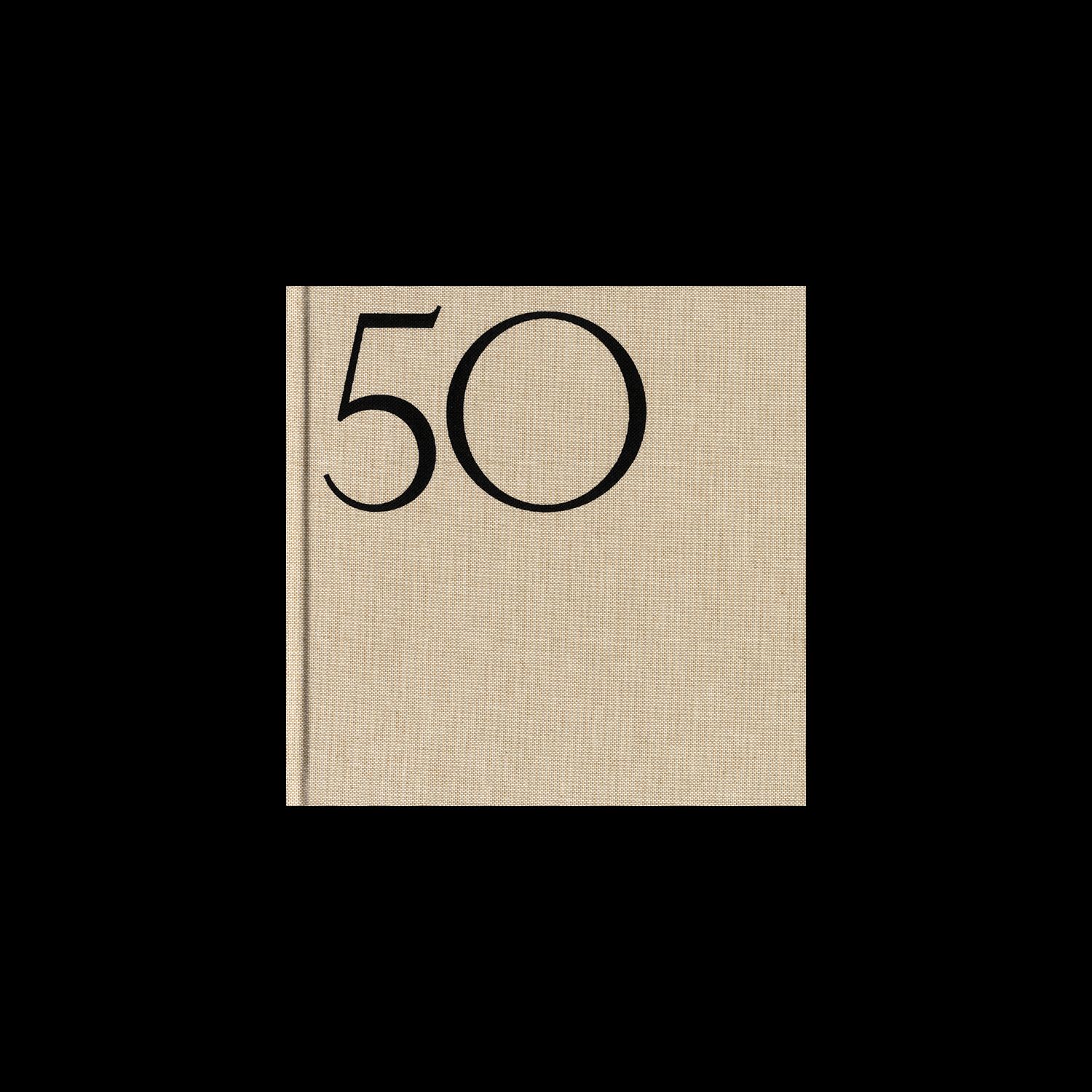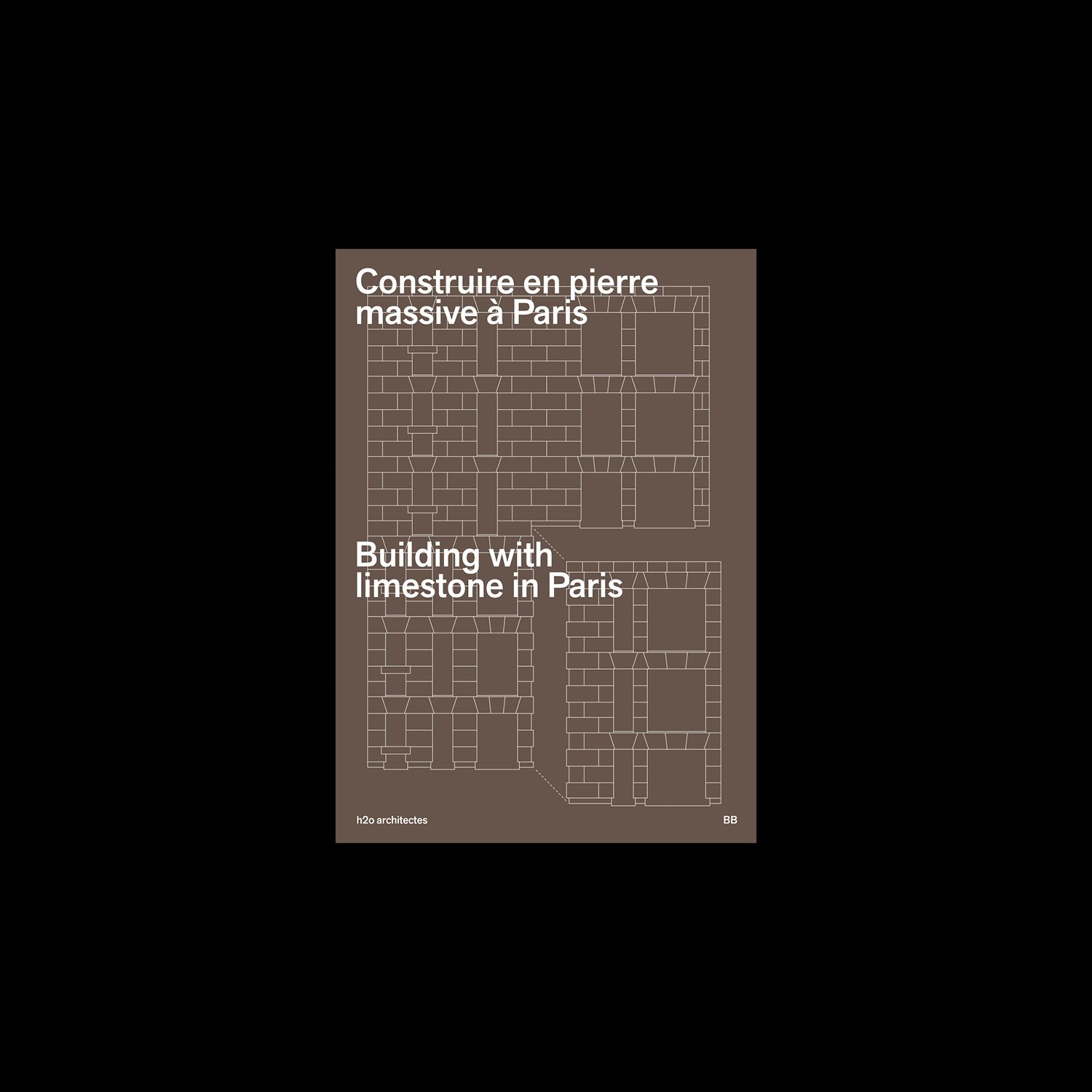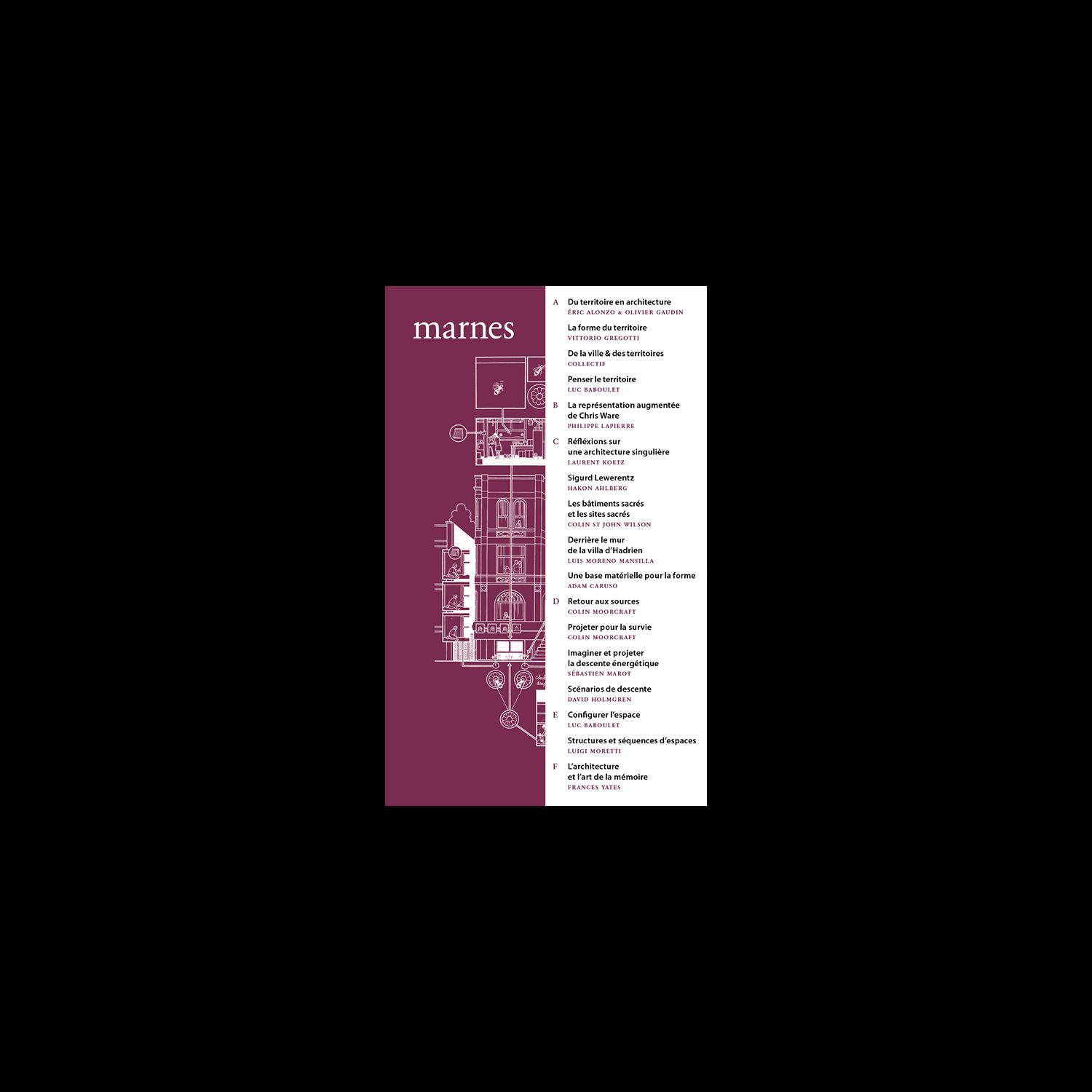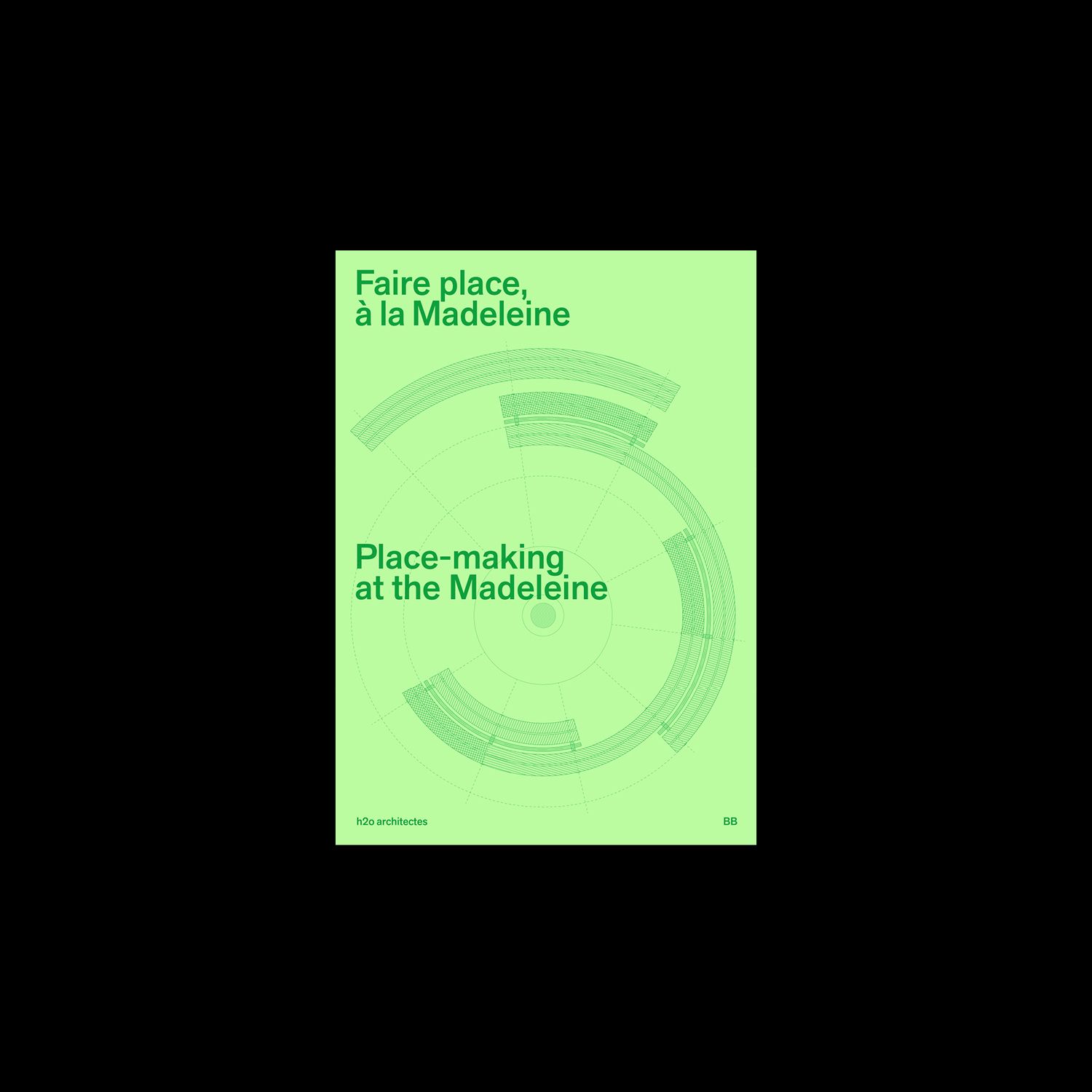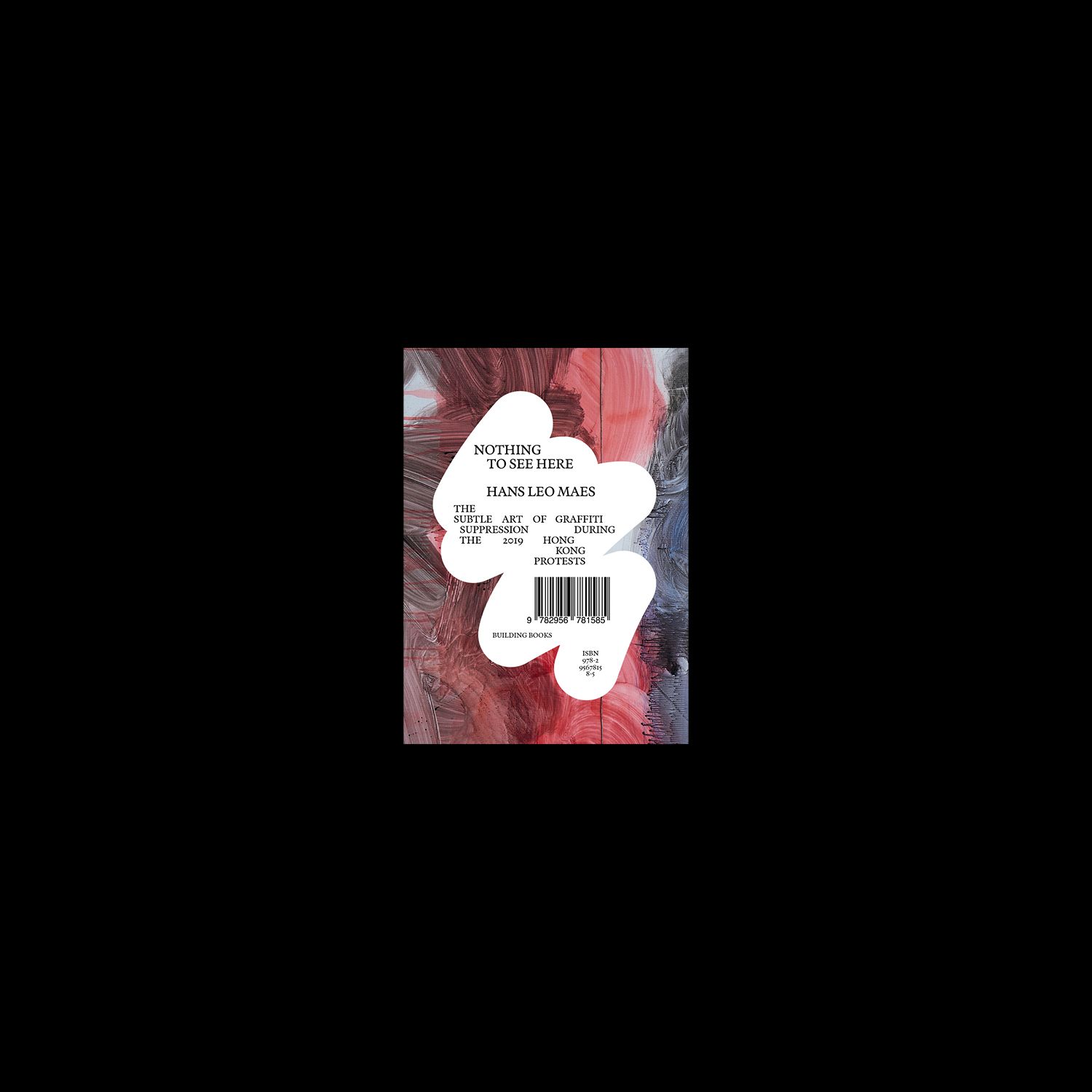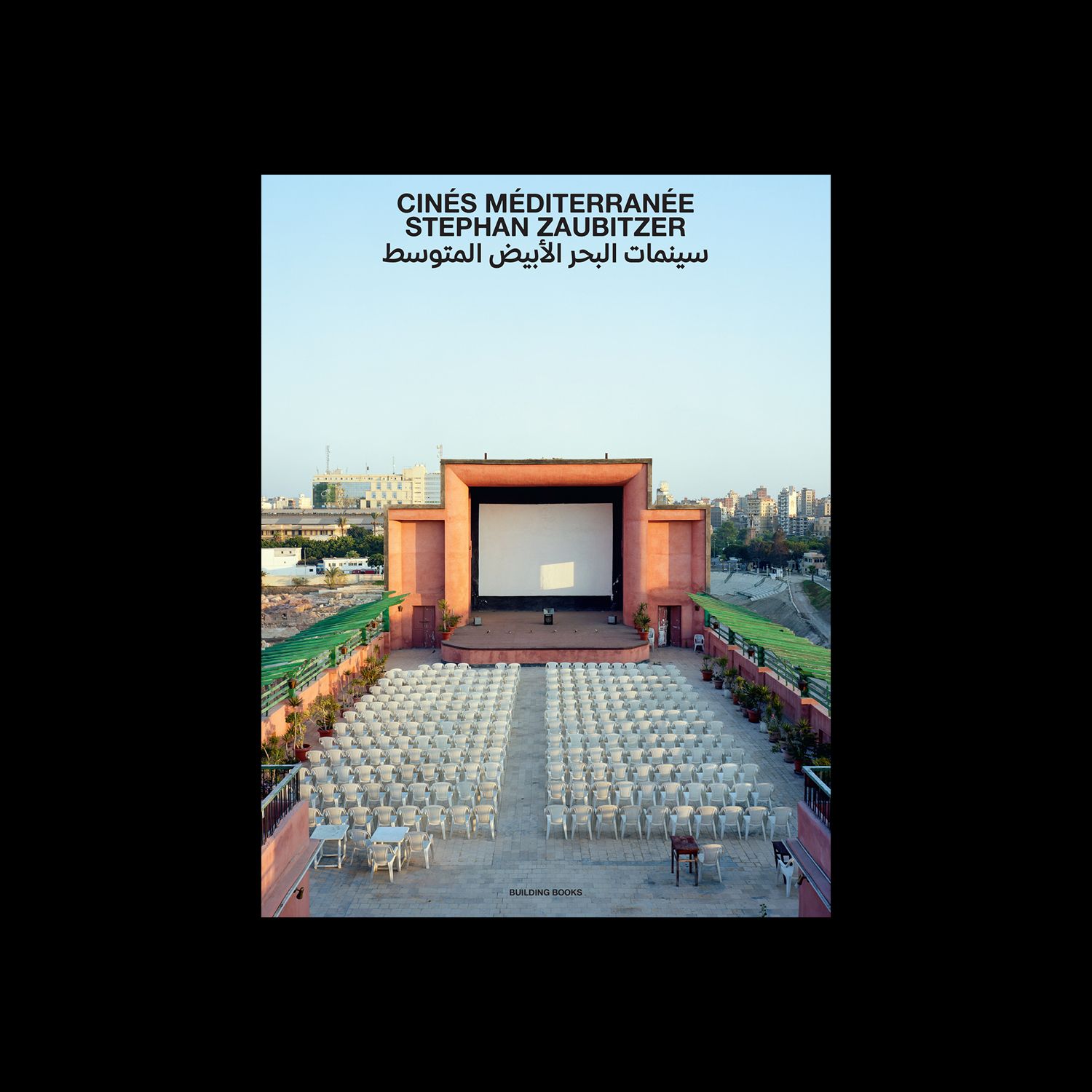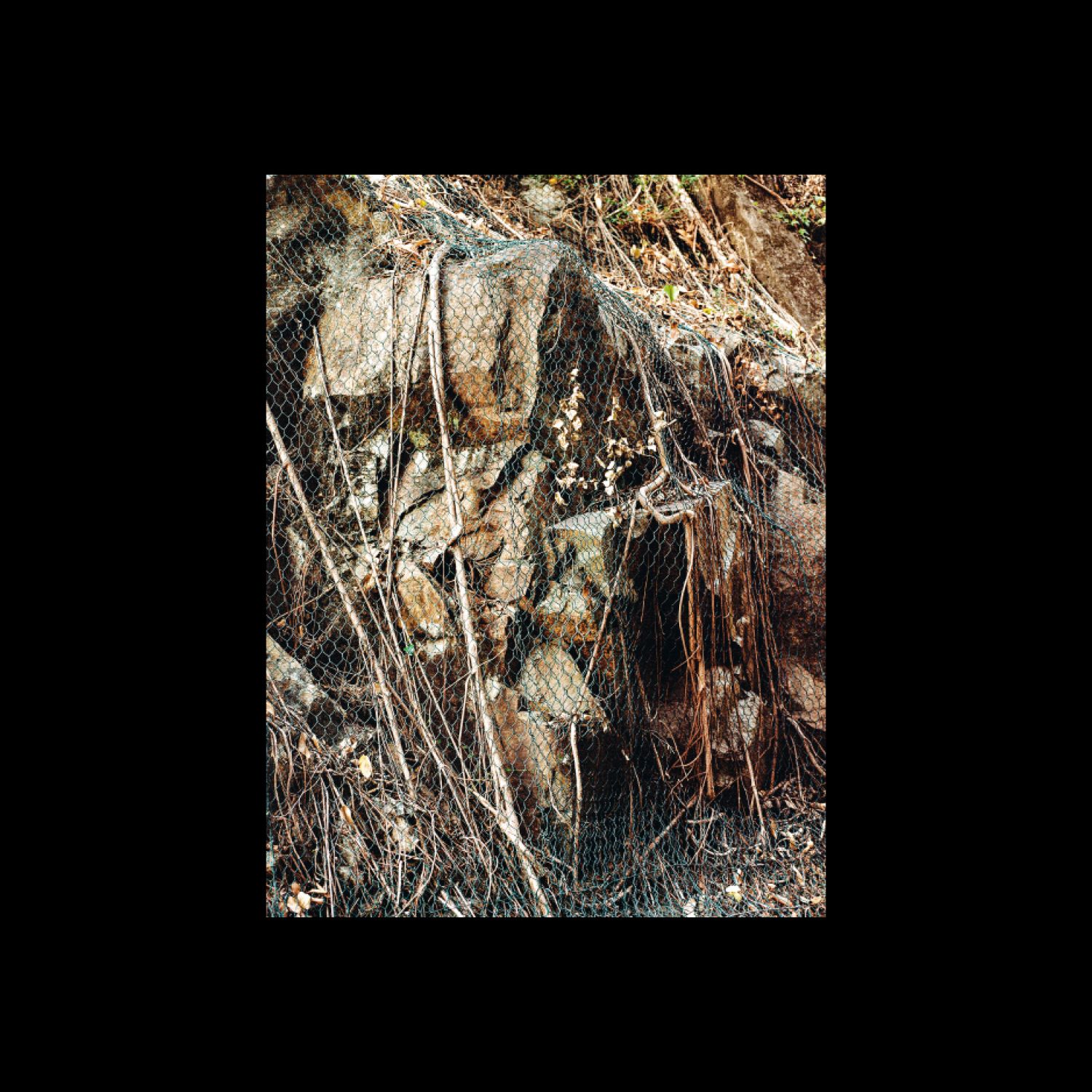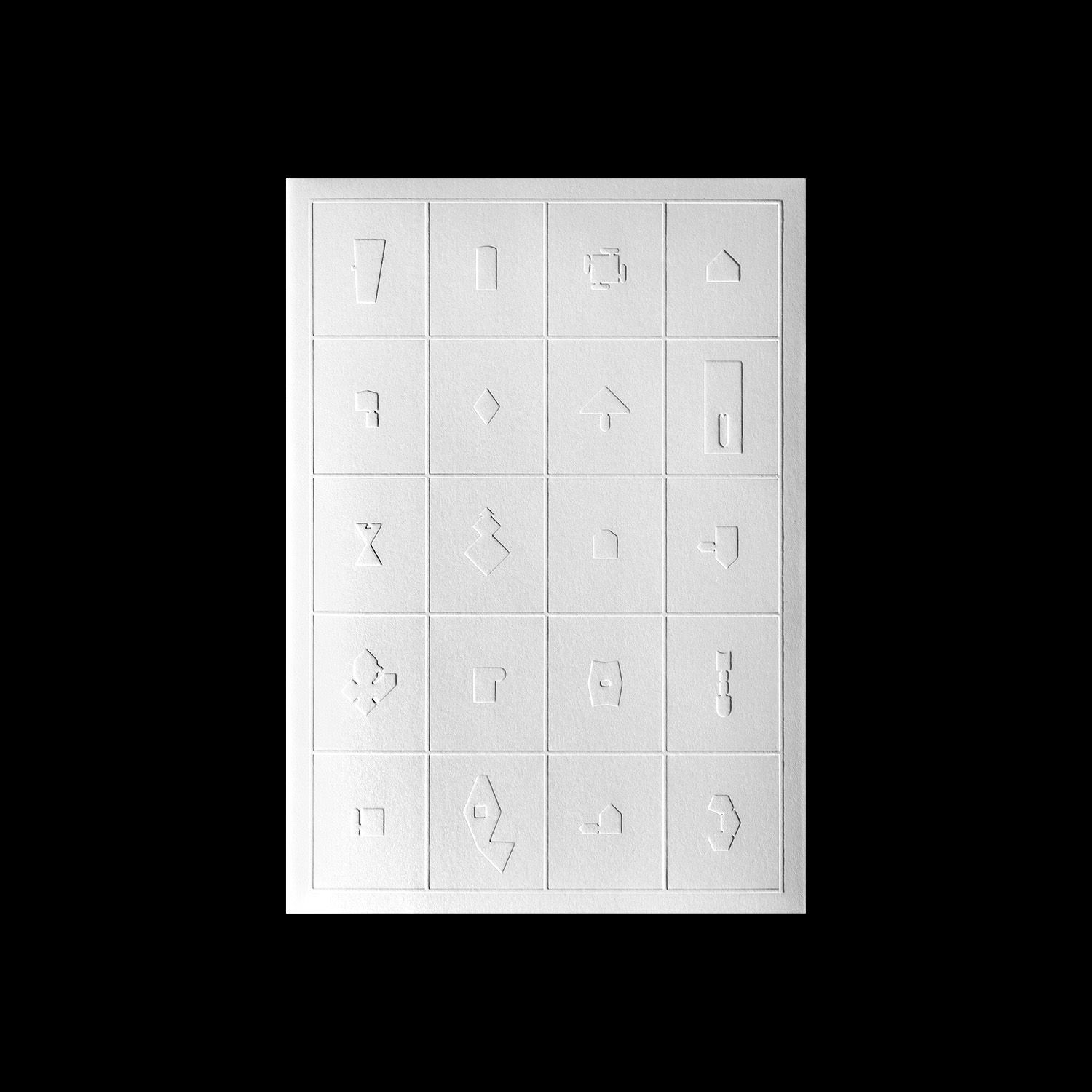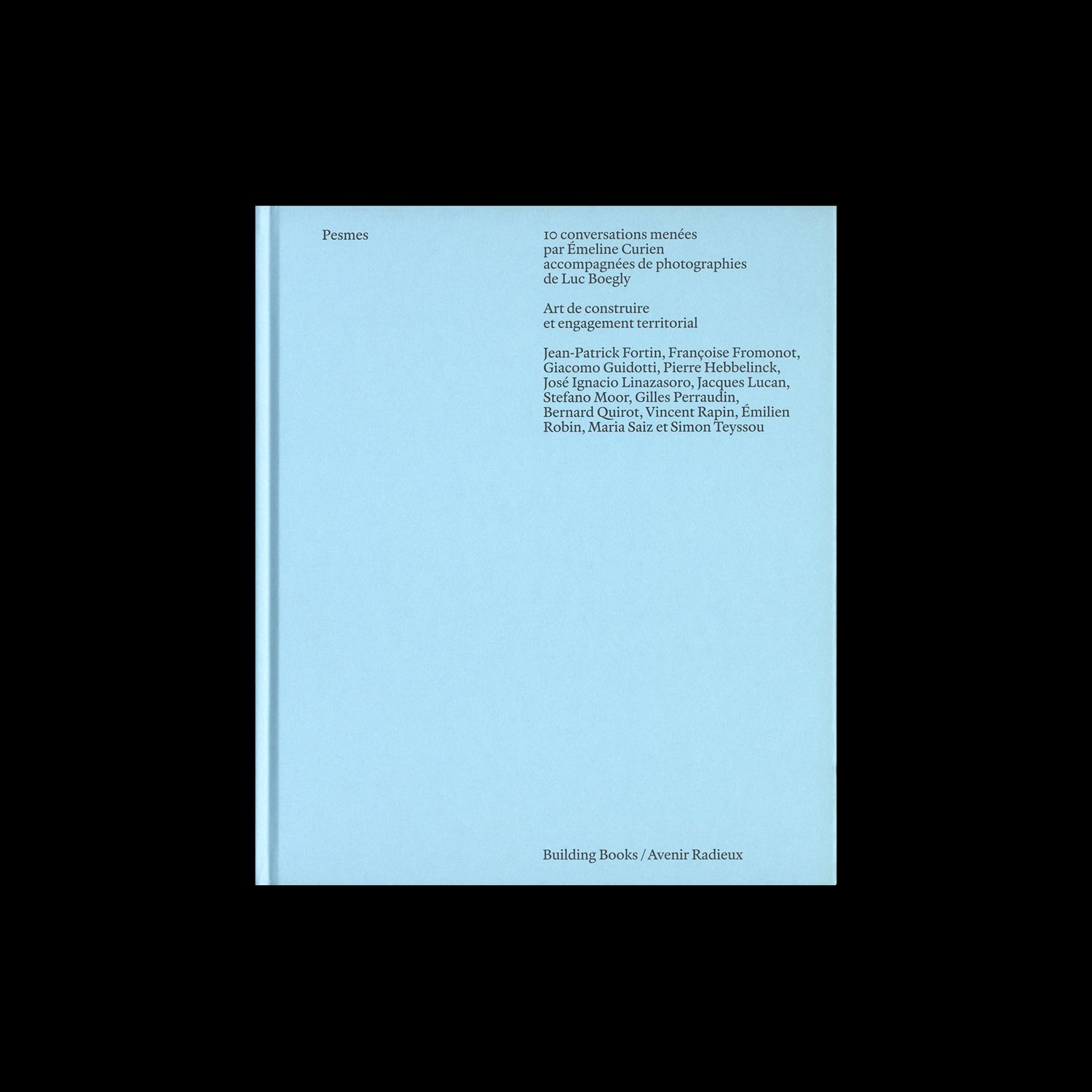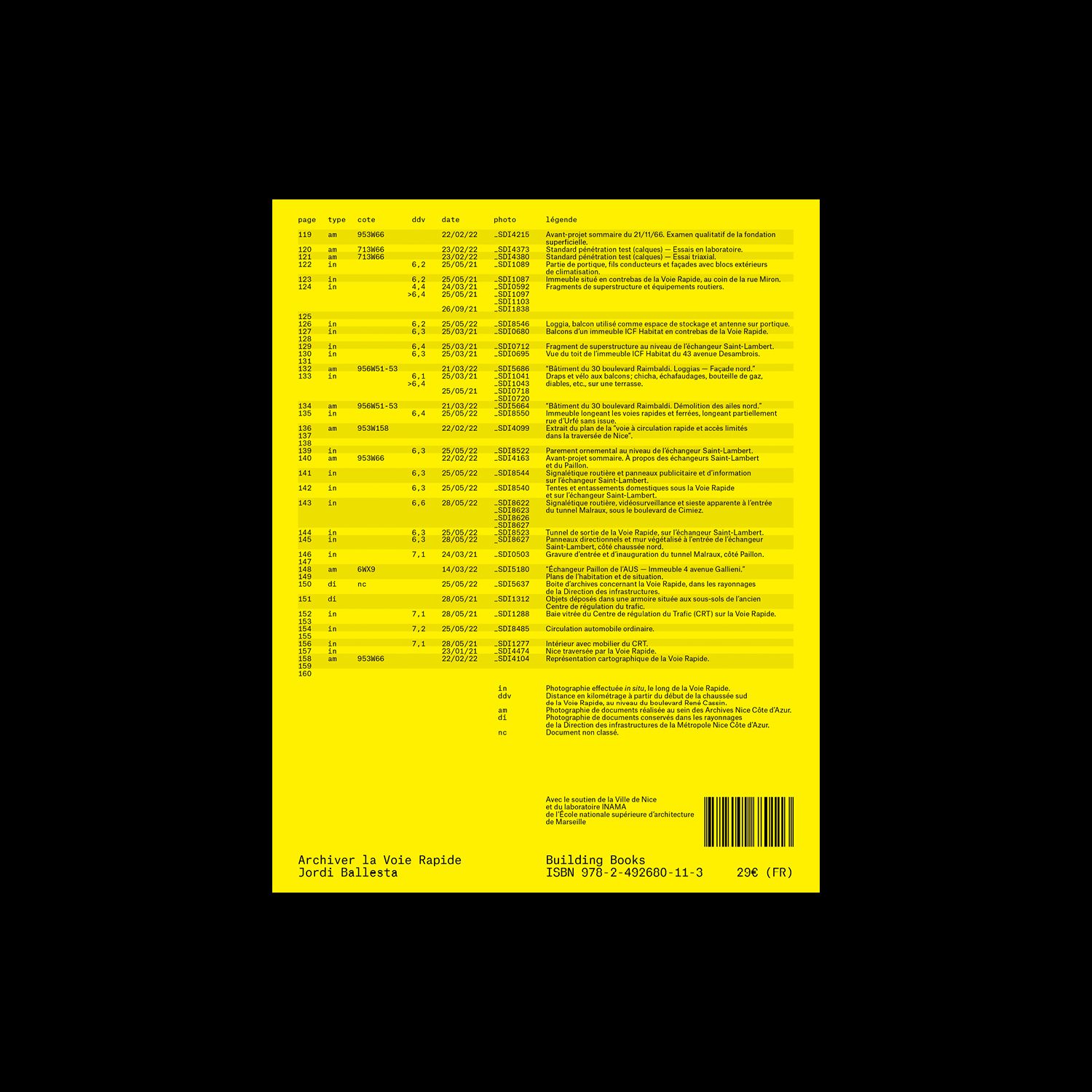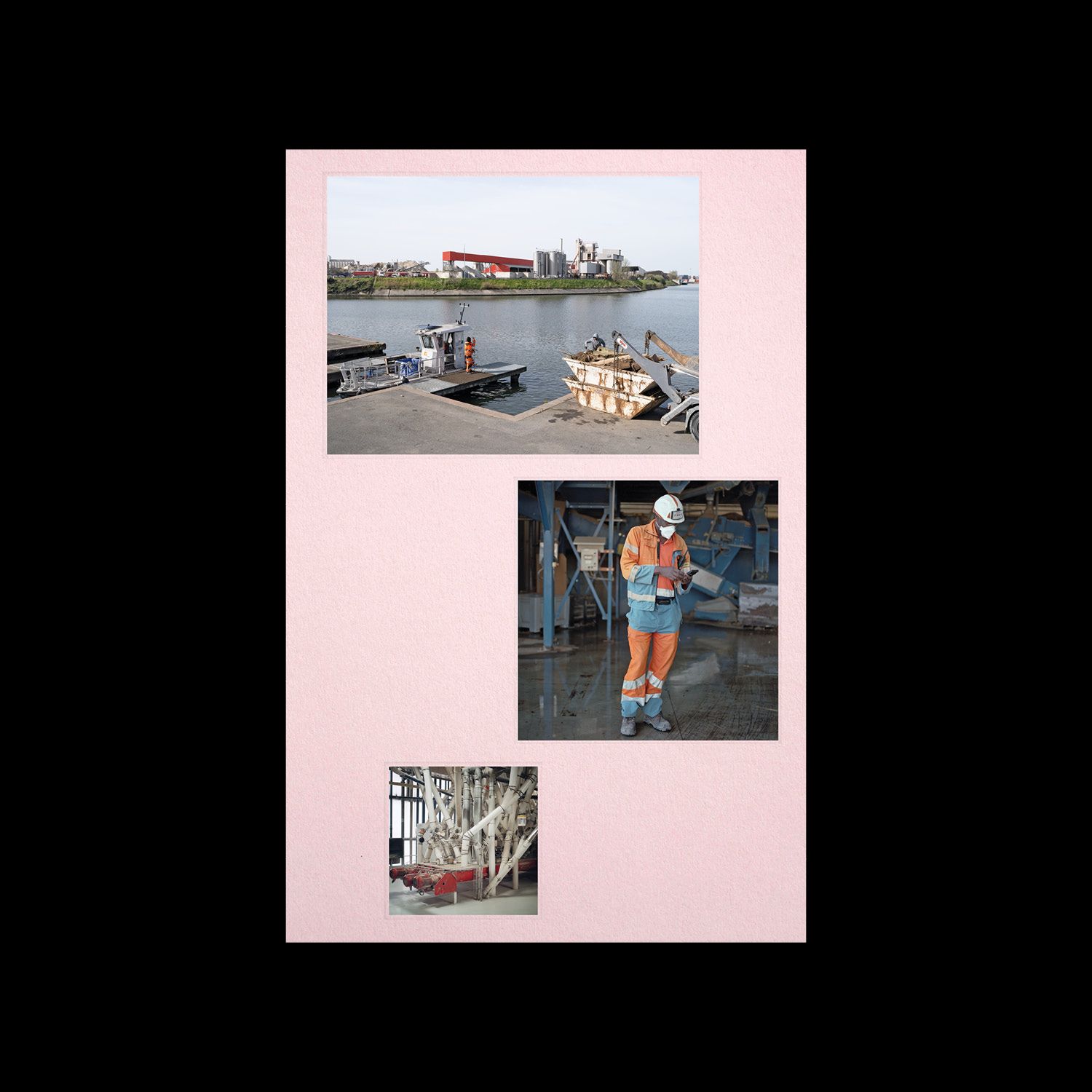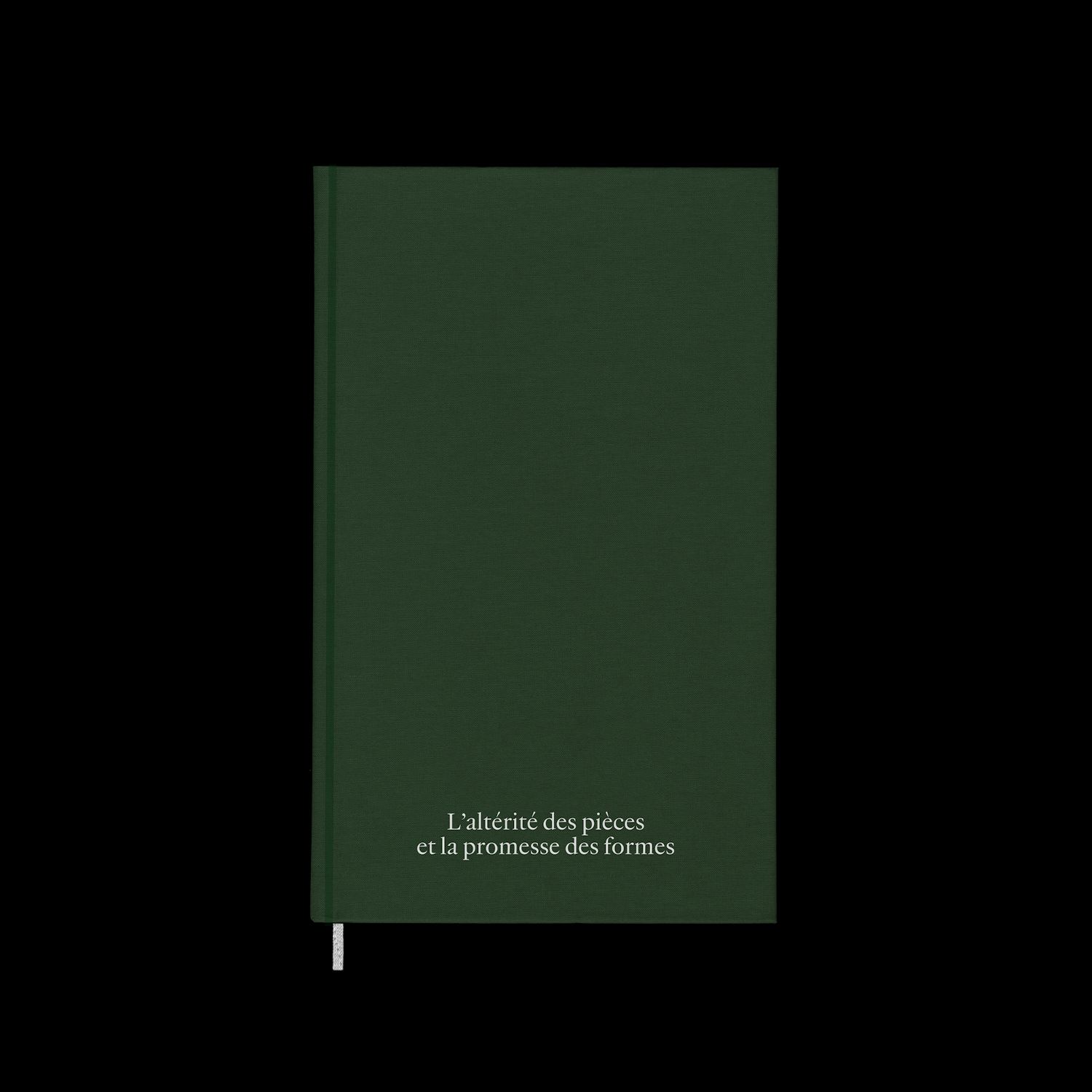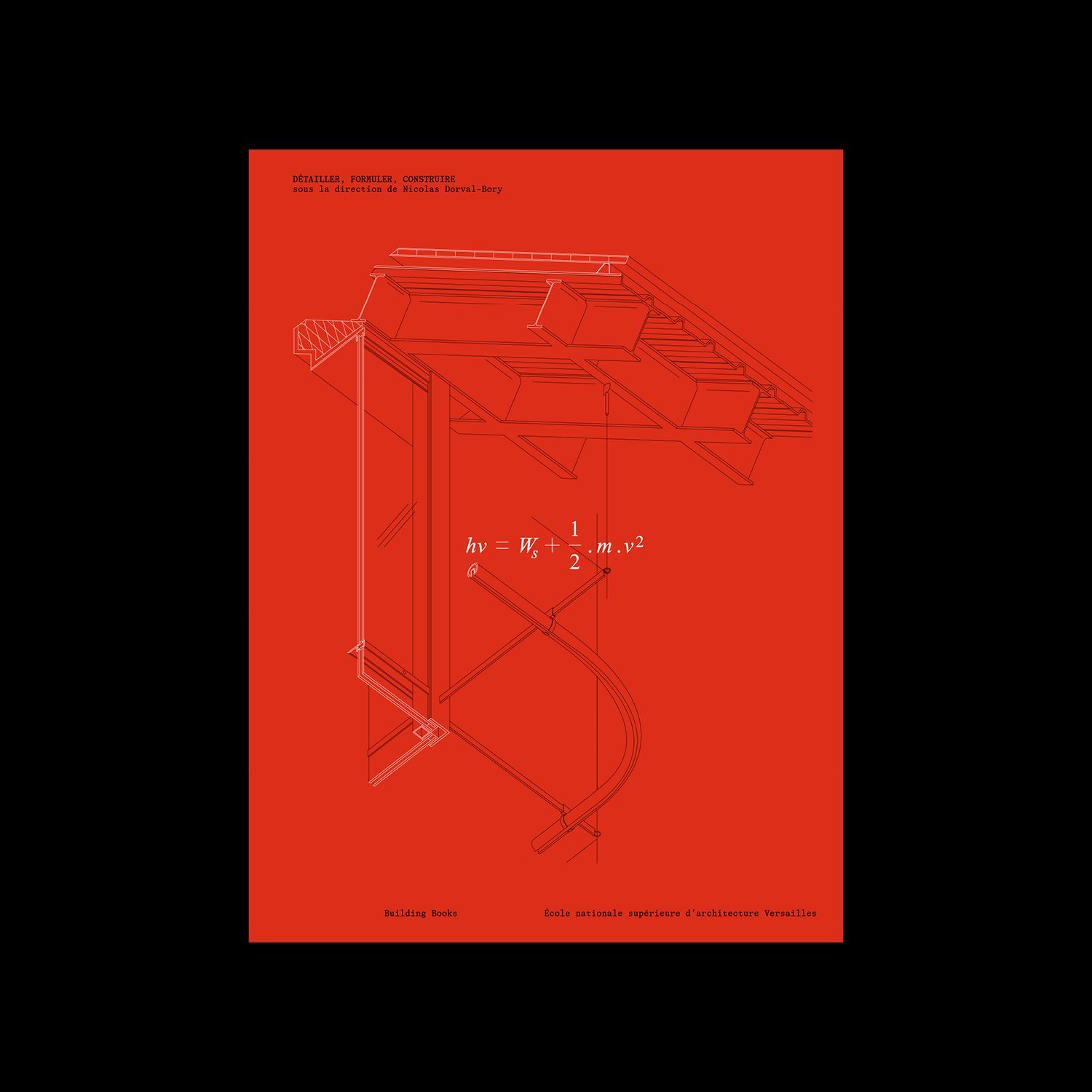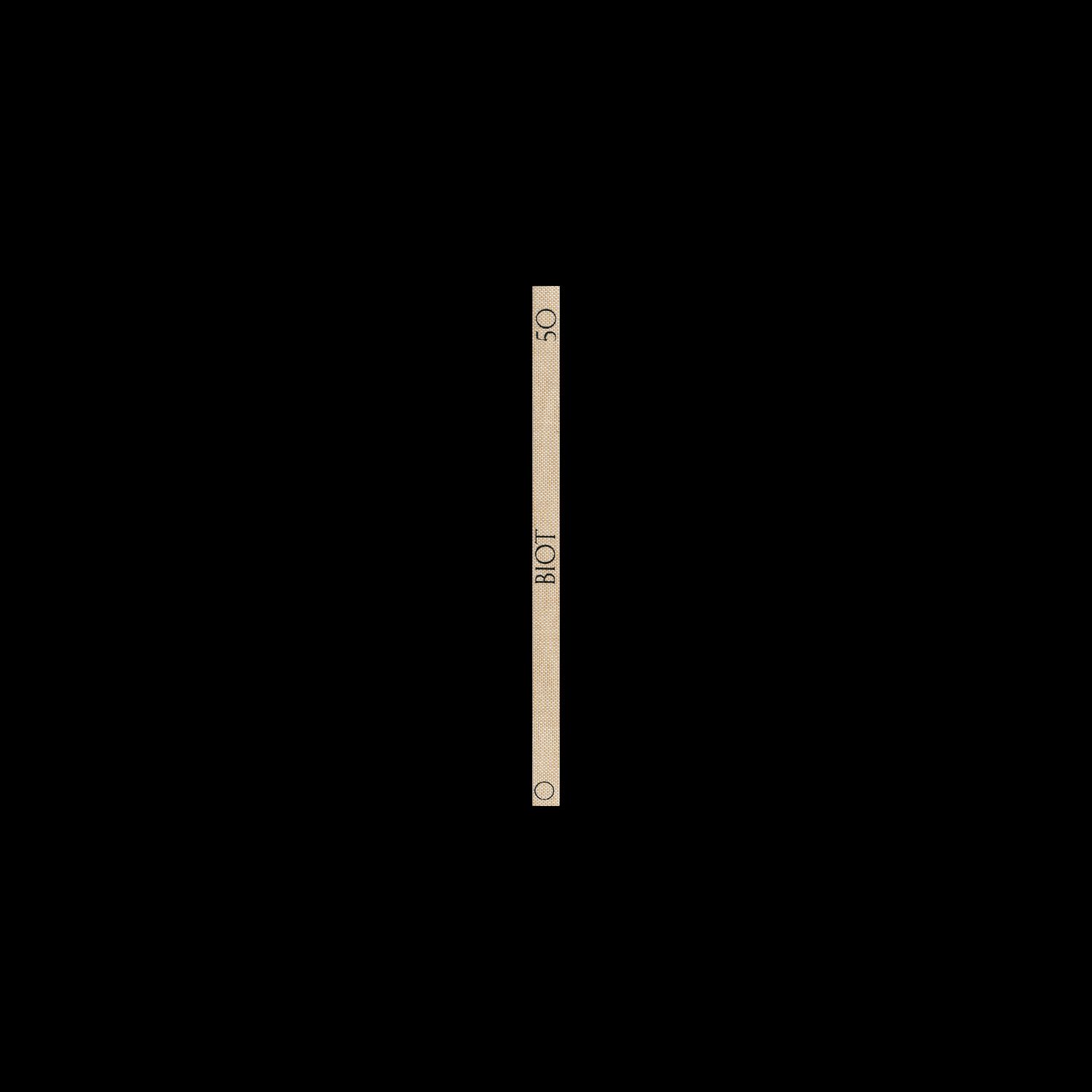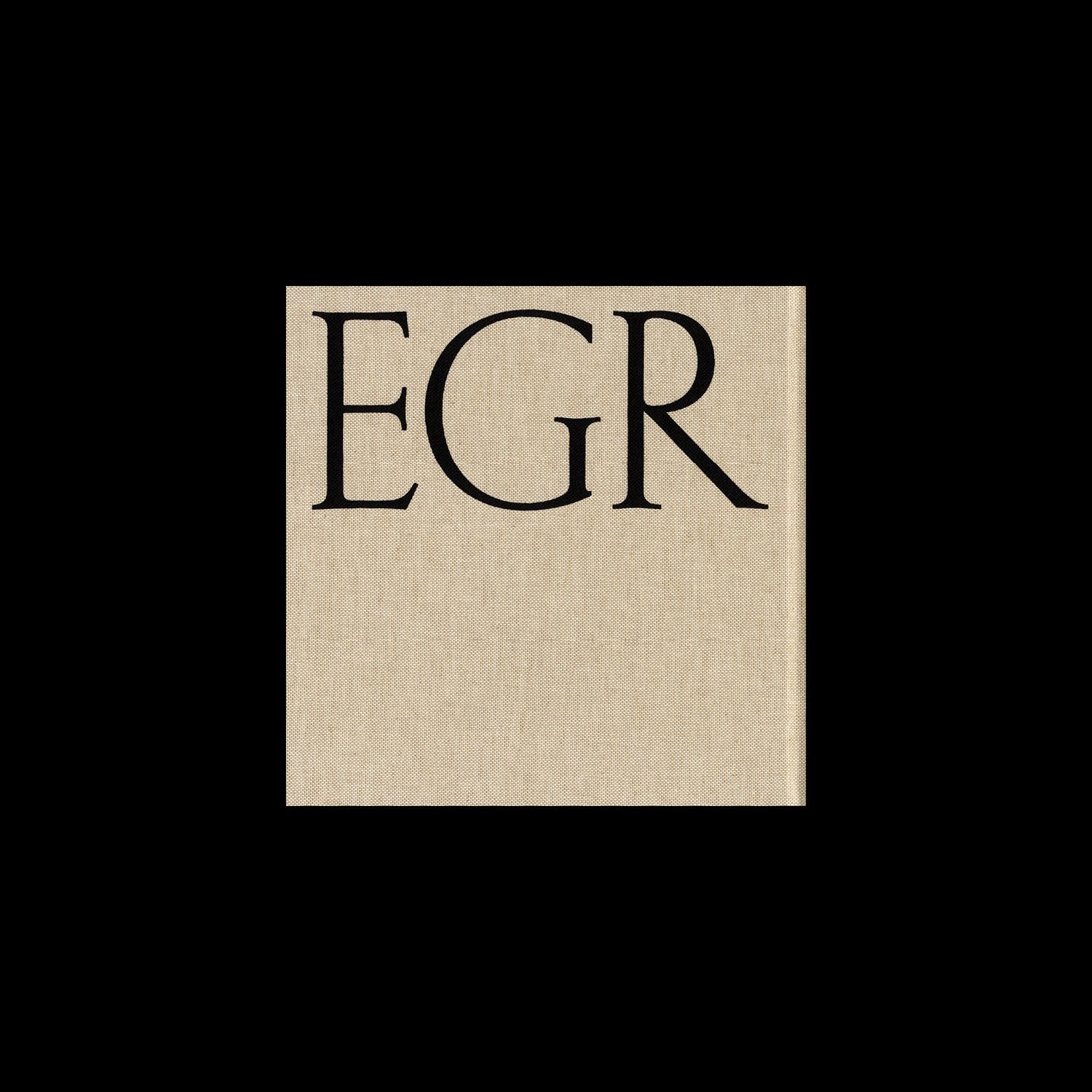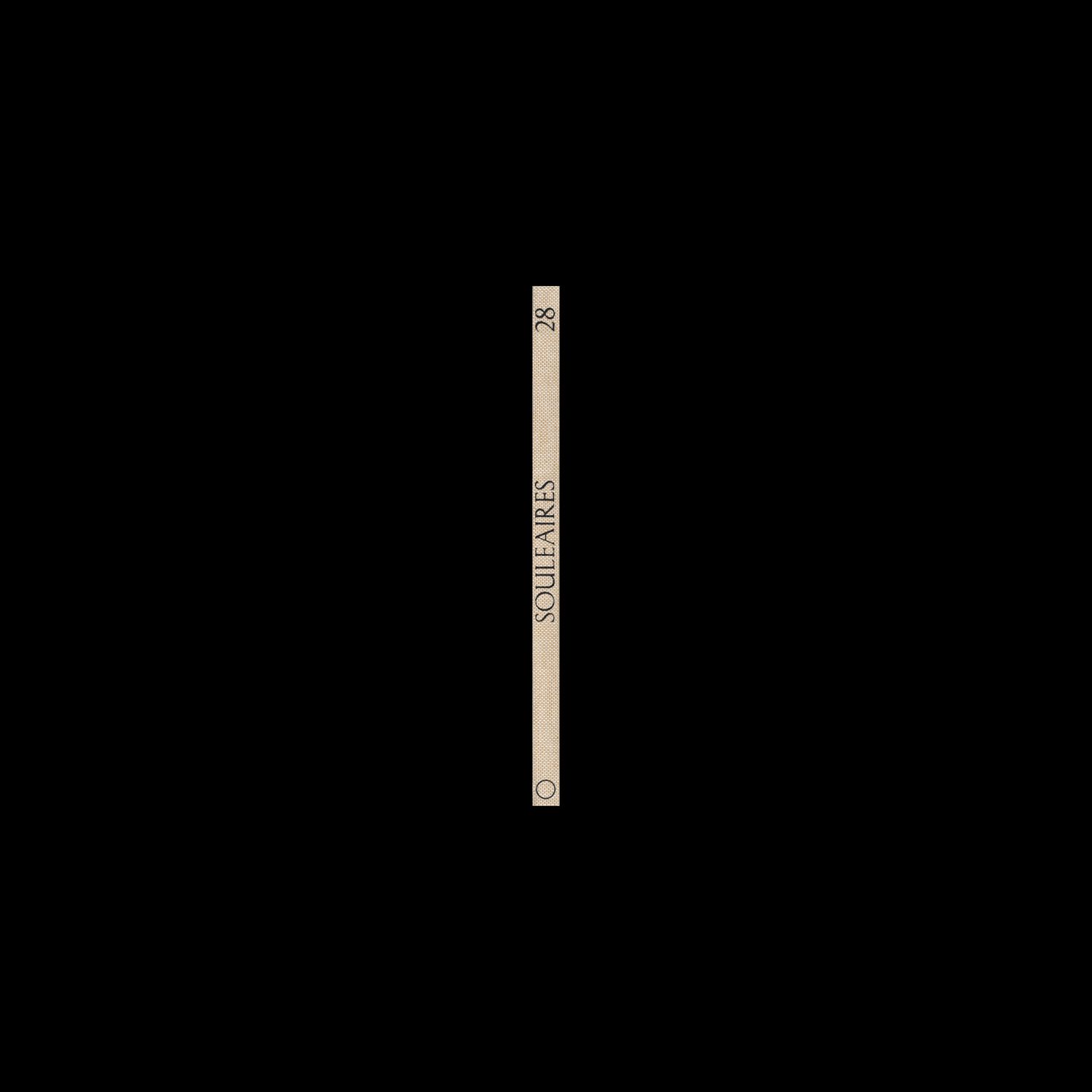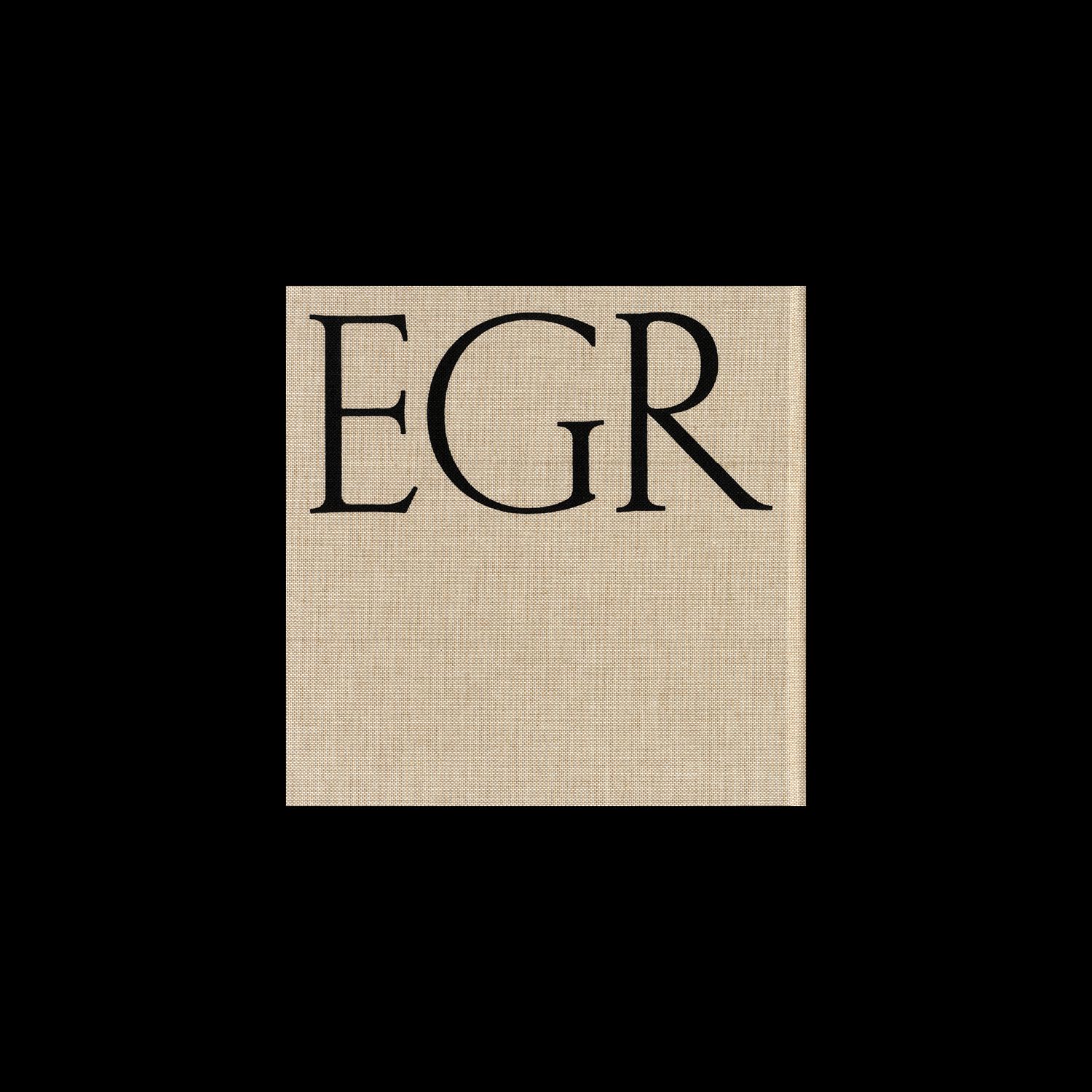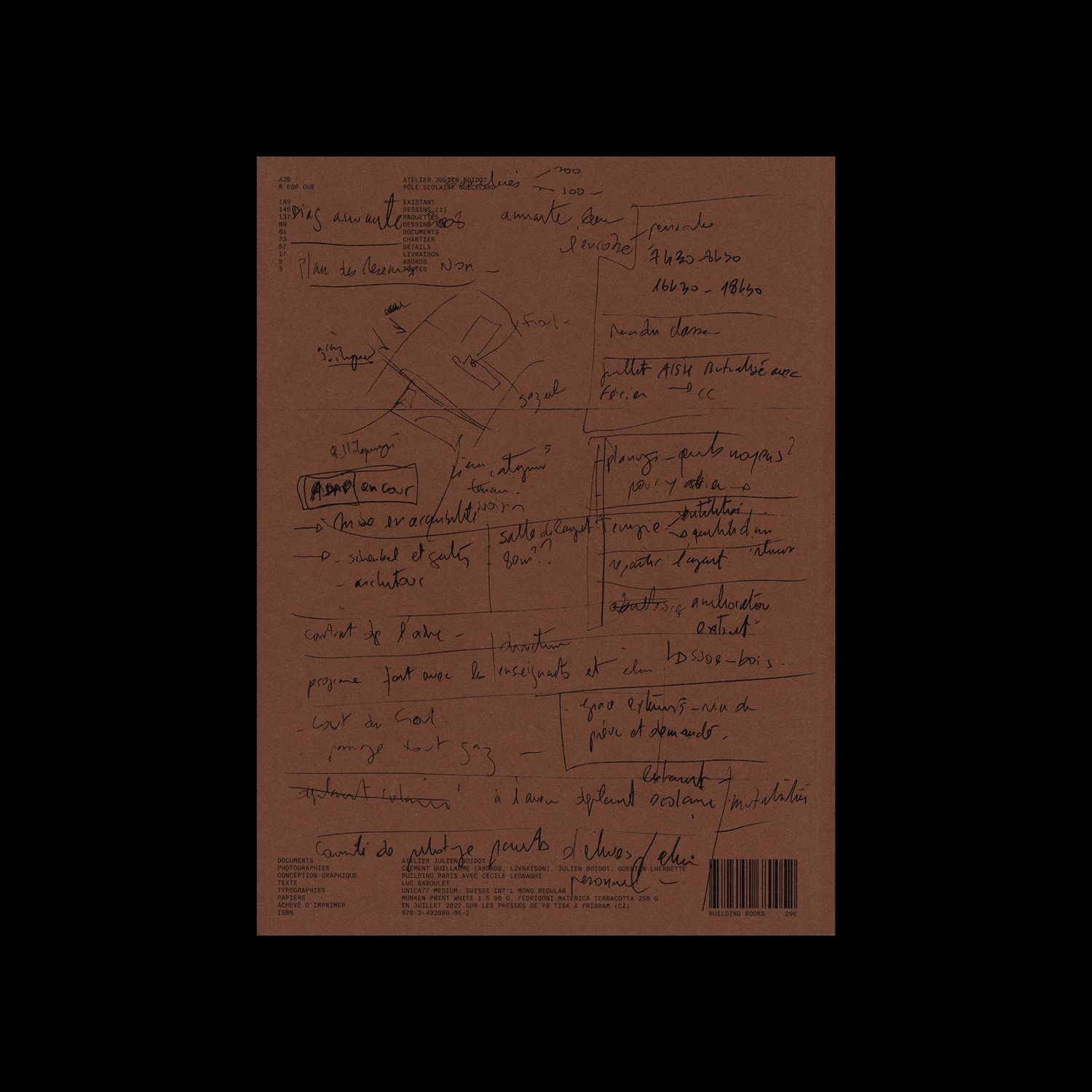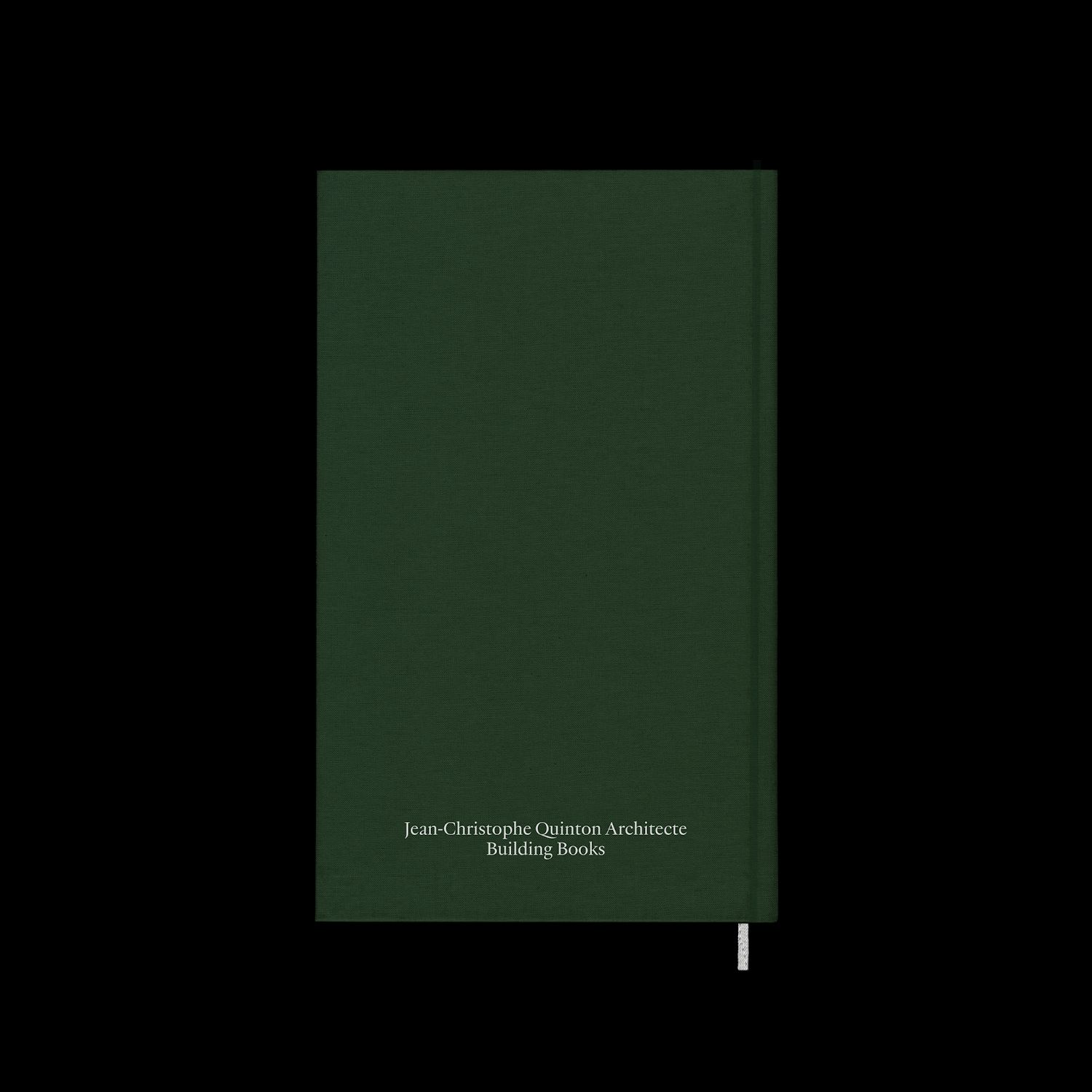
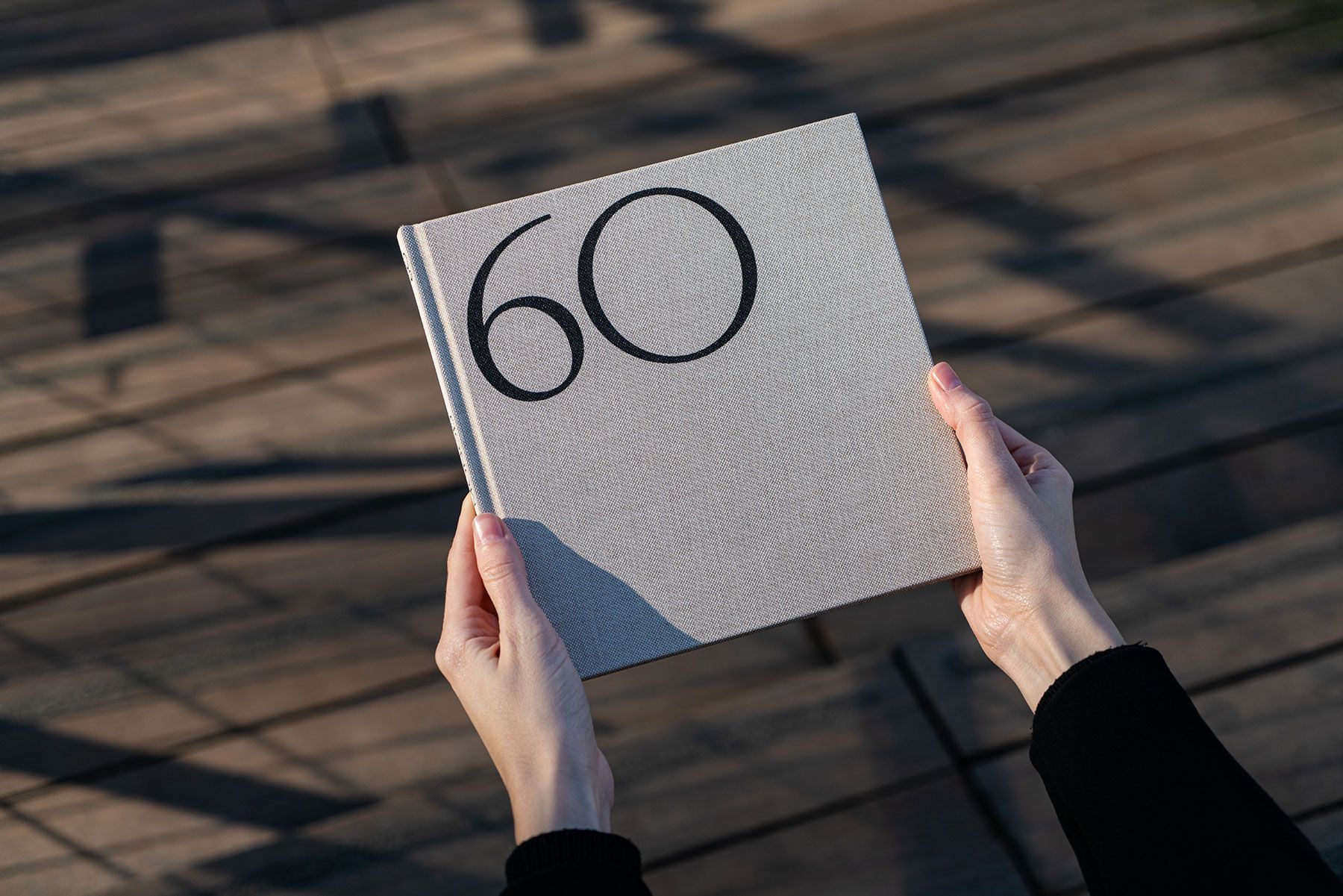


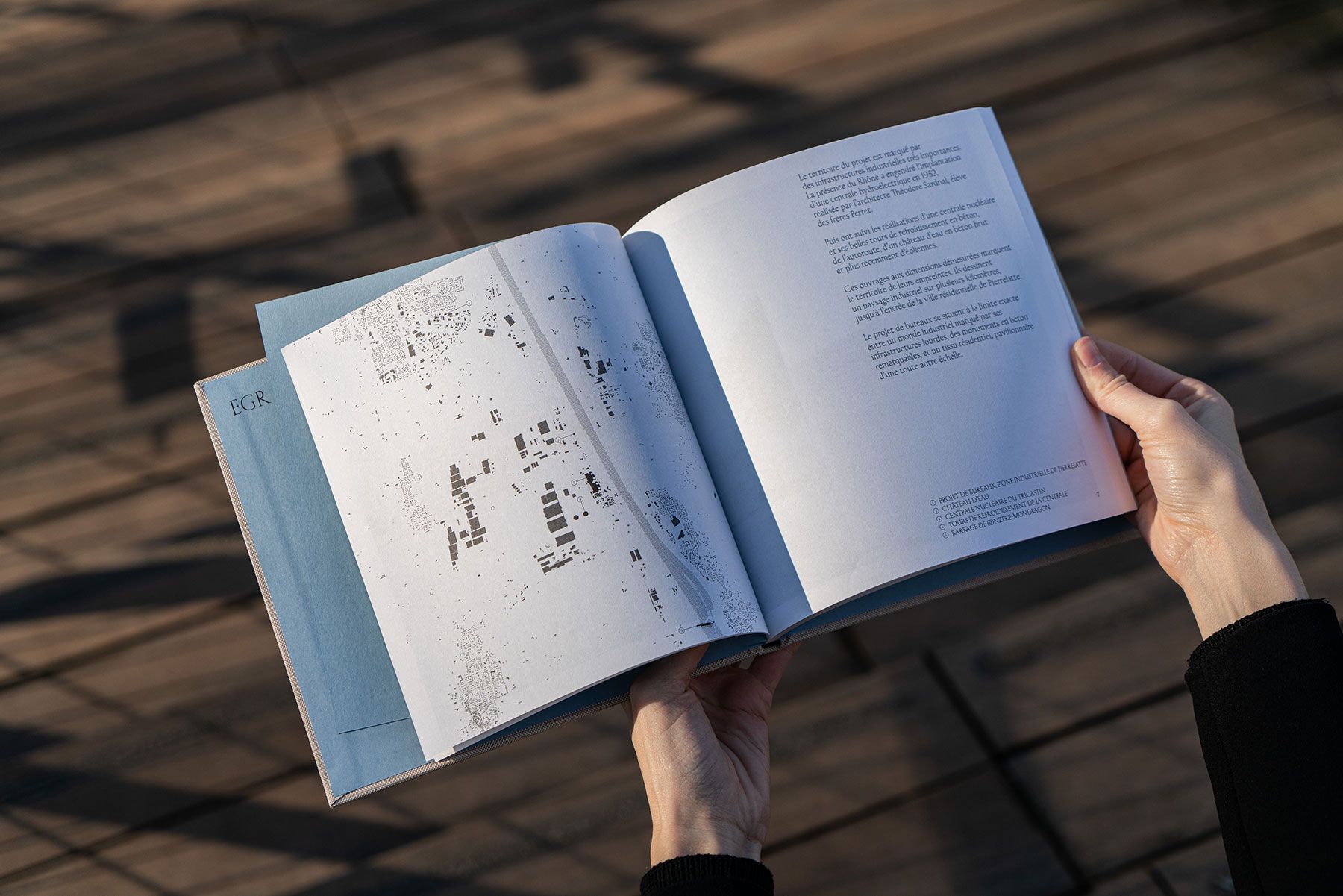
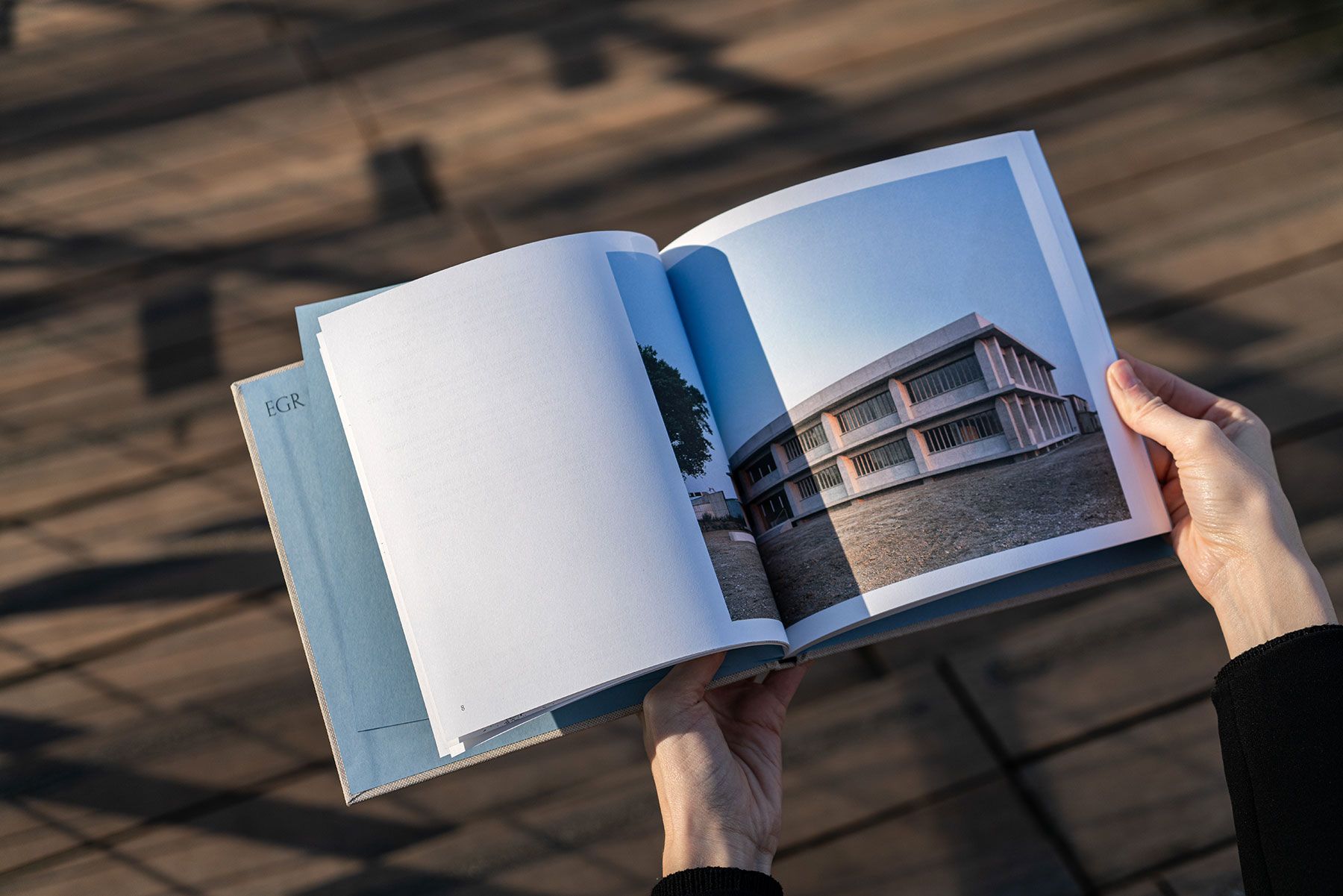
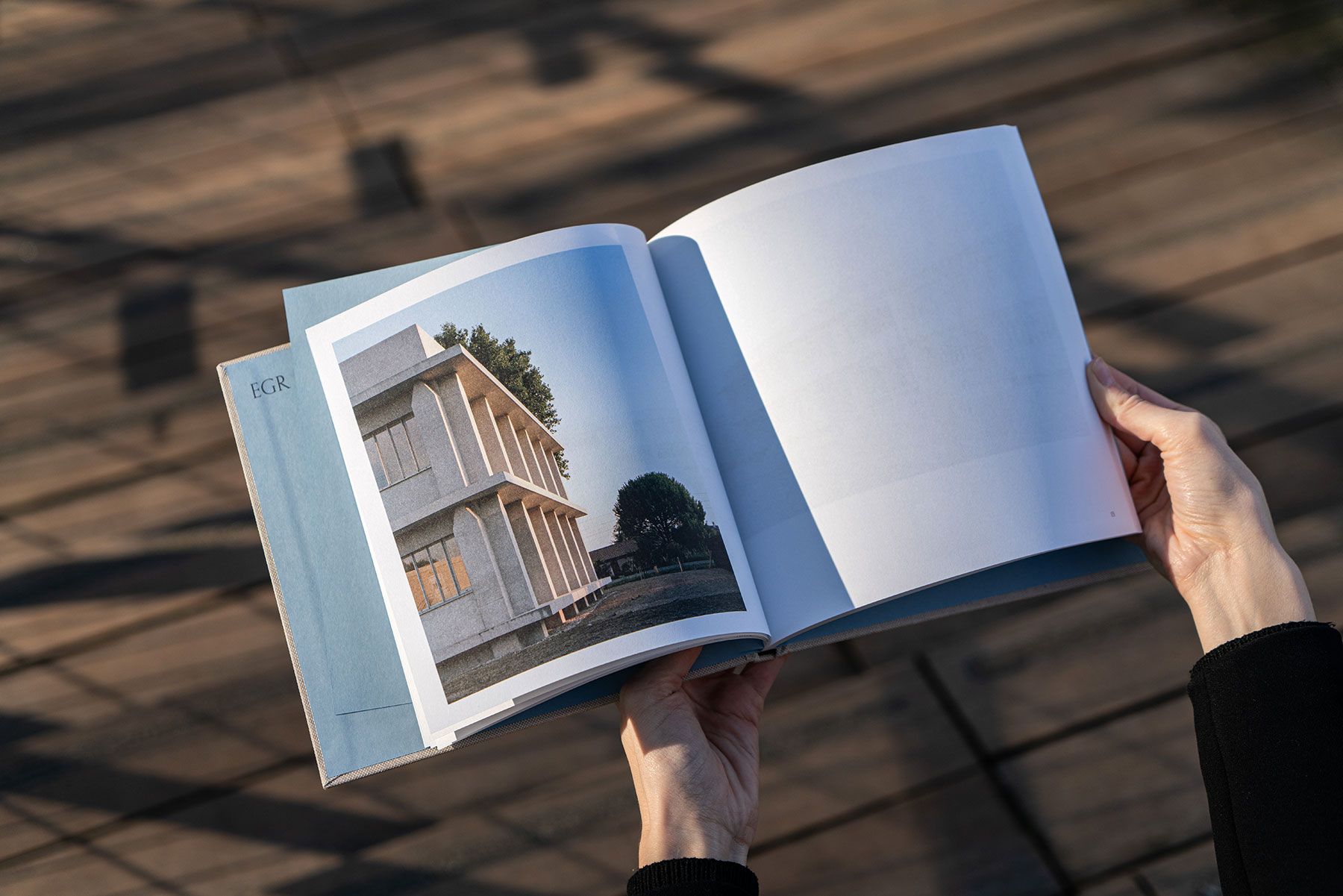

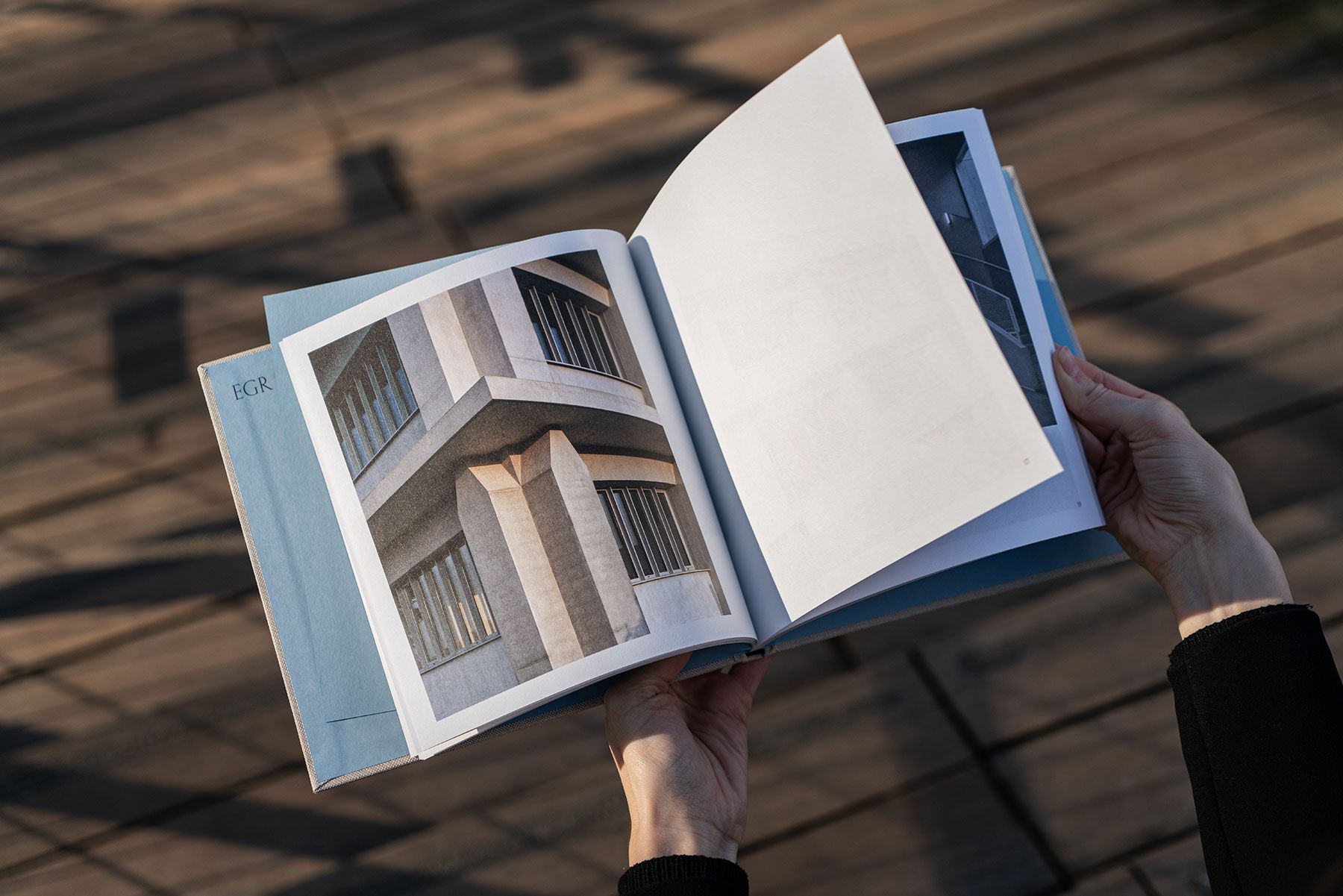

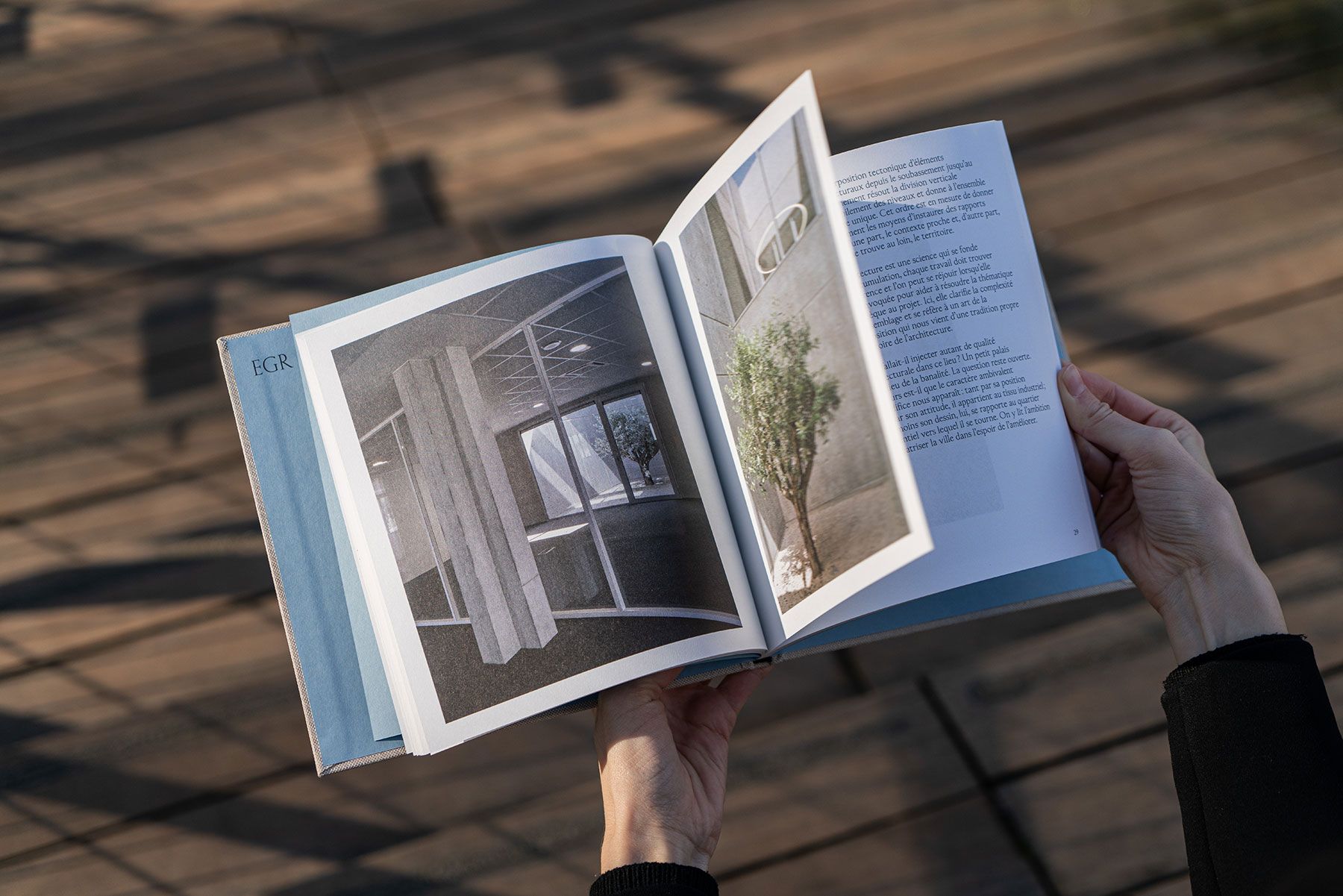

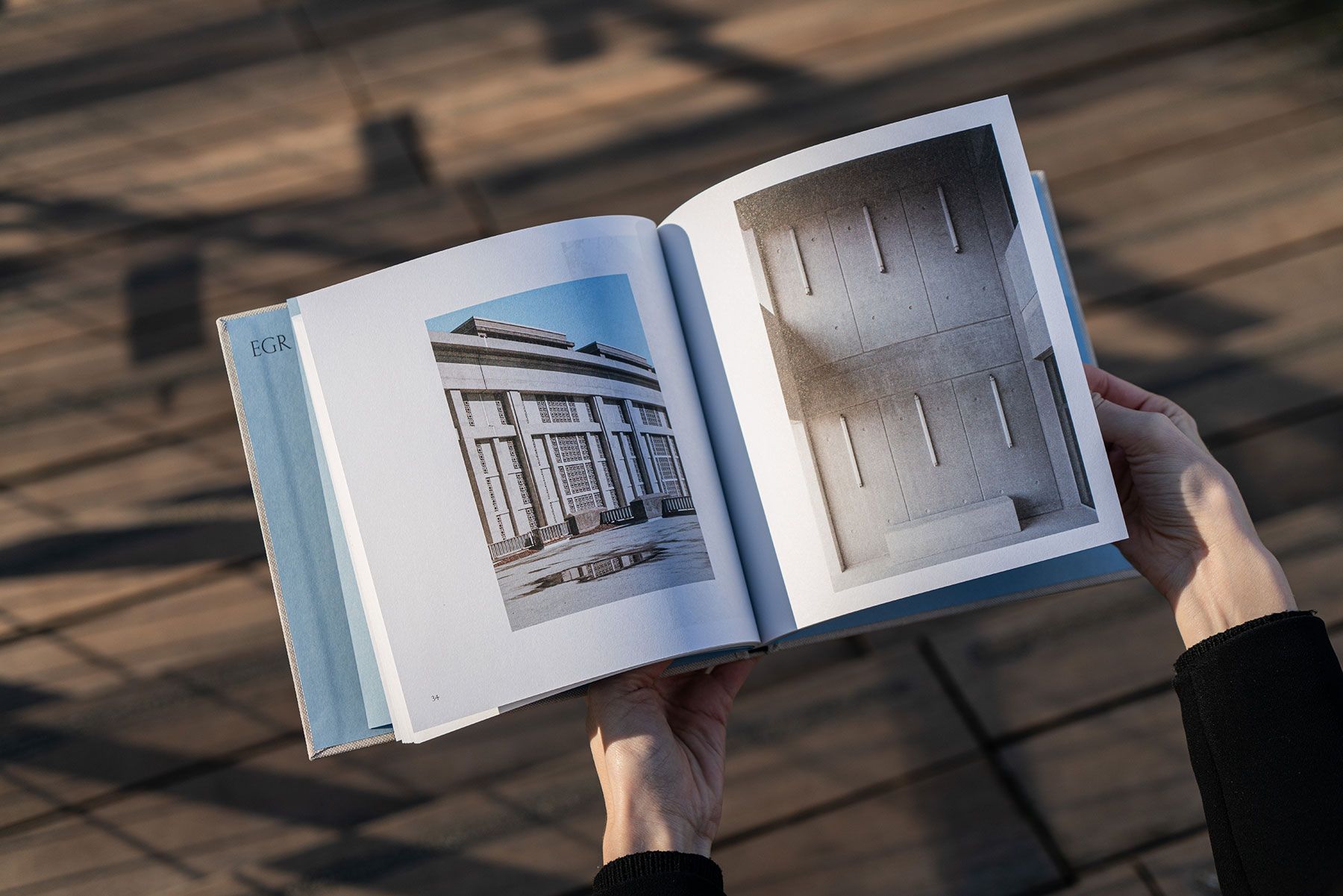
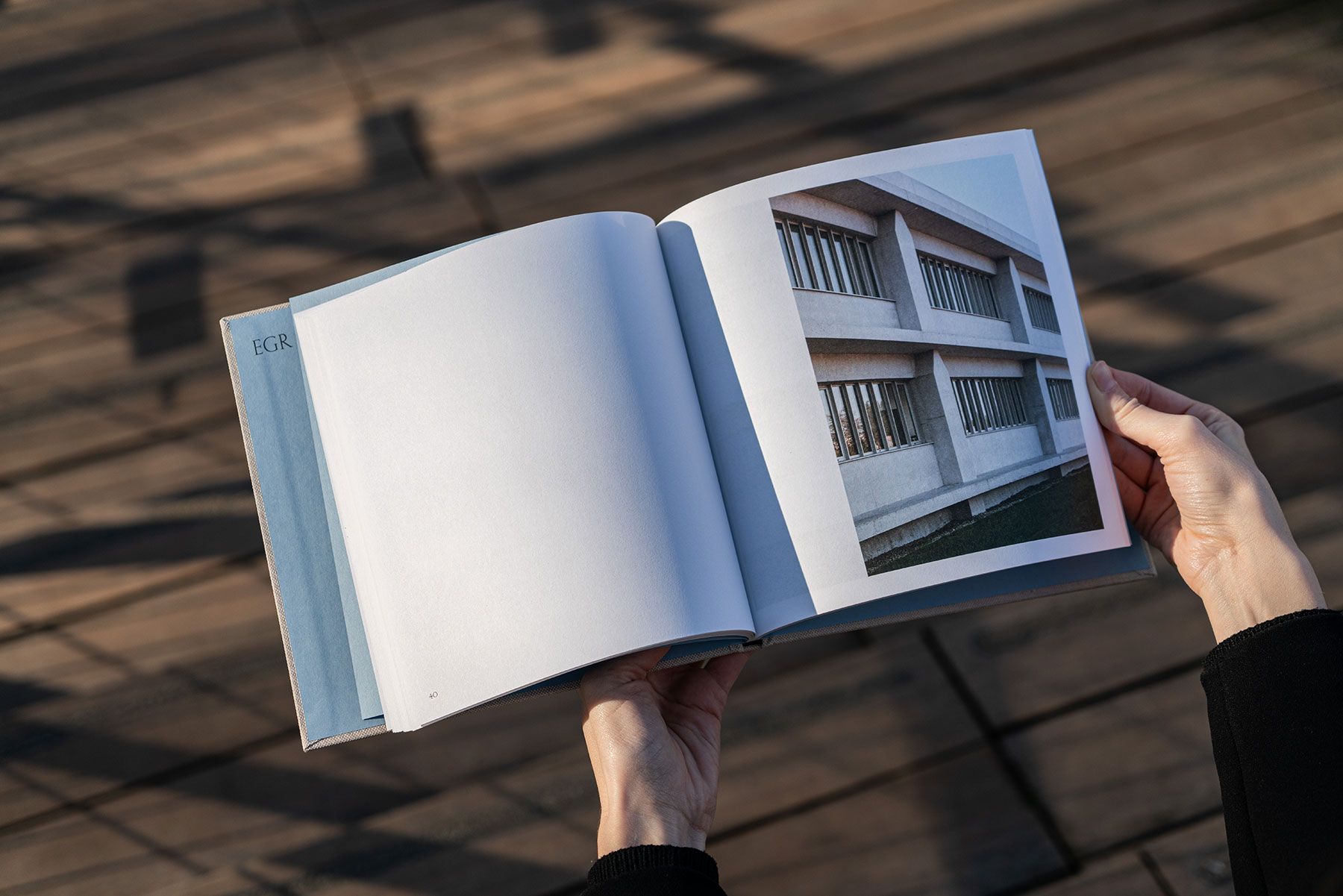
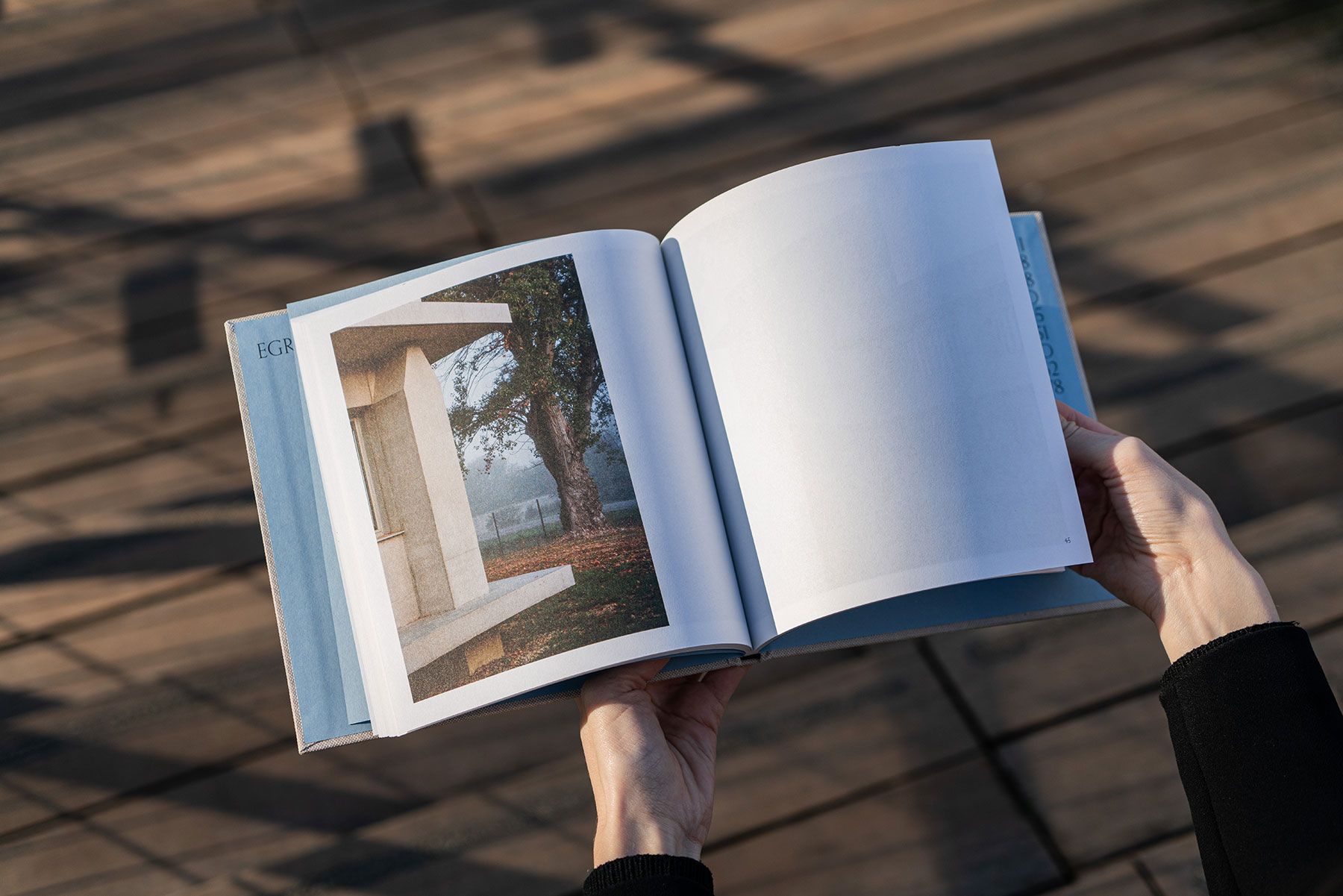

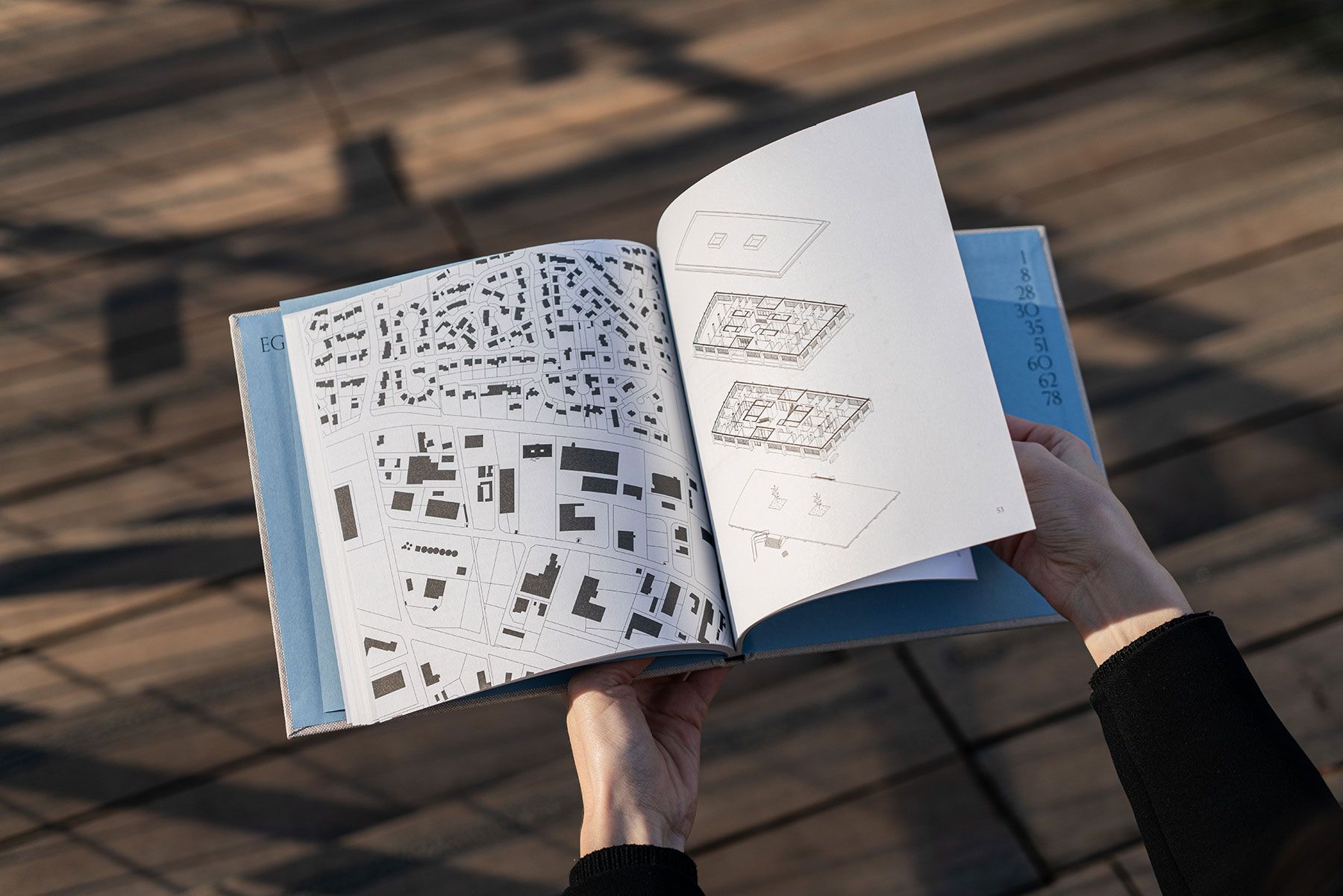


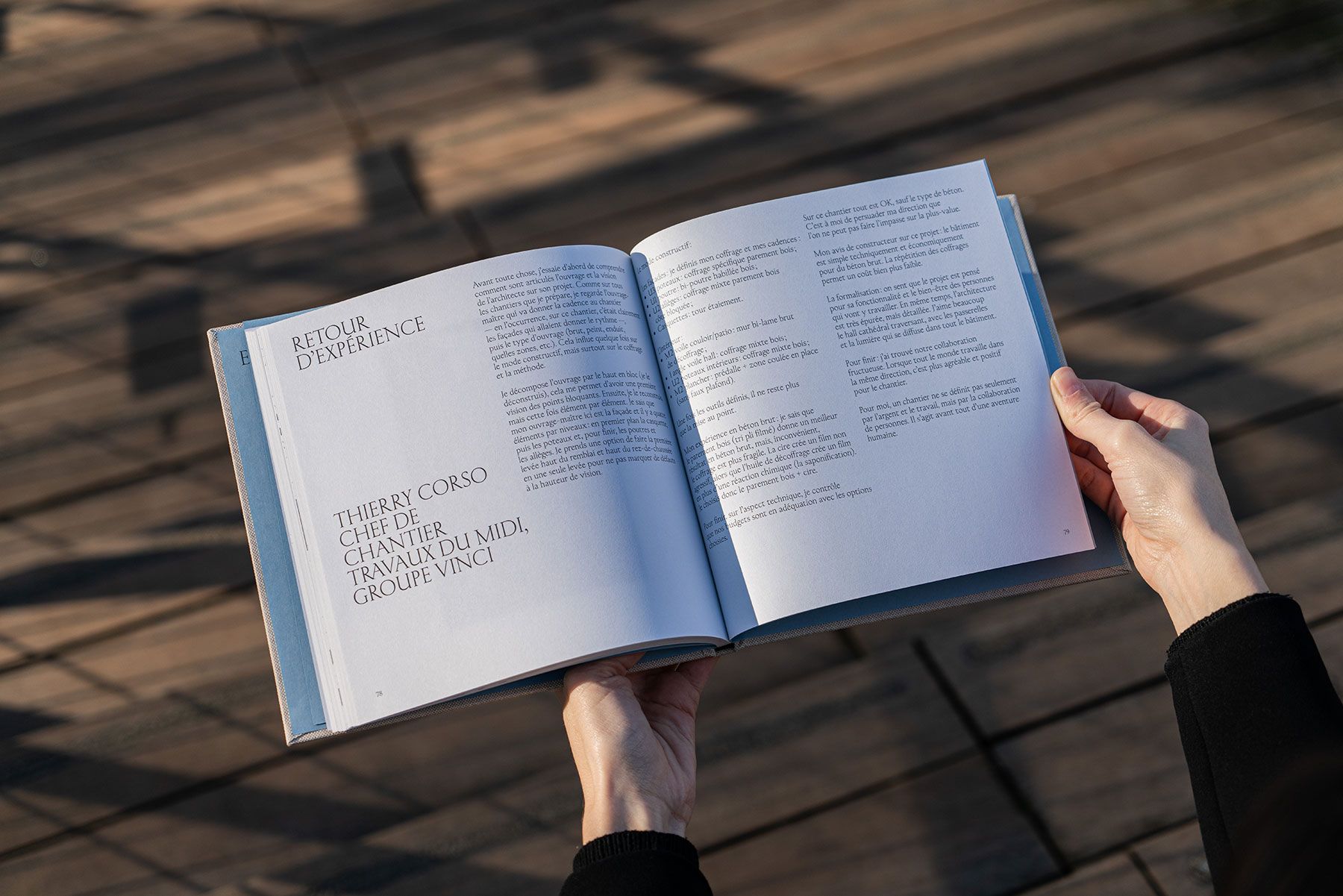





















60 Monod
Atelier EGR
ISBN 978-2-492680-14-4
22 €
FR — «La superposition tectonique d’éléments architecturaux depuis le soubassement jusqu’au couronnement résout la division verticale de l’empilement des niveaux et donne à l’ensemble un ordre unique. Cet ordre est en mesure de donner au bâtiment les moyens d’instaurer des rapports avec, d’une part, le contexte proche et, d’autre part, ce qui se trouve au loin, le territoire.» (extrait de la préface de Stefano Moor)
60 Monod est le troisième volume de la Collection du Cercle, une archive imprimée sous forme de recueil monographique des bâtiments construits par l’Atelier EGR. En associant le texte d’un architecte et le regard d’un ou plusieurs photographes, chaque volume procède à sa manière à une archéologie du projet, pour remonter à ses idées fondatrices.
Avec un texte de Stefano Moor et des photographies de Agathe Rosa (chantier), Giaime Meloni, Maxime Delvaux (livraison).
EN — «The tectonic superimposition of architectural elements from the base to the crown resolves the vertical division of the stack of levels and gives the whole a unique order. This order is able to give the building the means to establish relationships with both the immediate context and what lies further away, the territory.» (extract from the preface of Stefano Moor)
60 Monod is the third volume of the Collection du Cercle, a printed archive in the form of a monographic collection of buildings constructed by Atelier EGR. By combining the text of an architect and the view of one or more photographers, each volume proceeds in its own way to an archaeology of the project, going back to its founding ideas.
With a text by Stefano Moor and photographs by Agathe Rosa (construction), Giaime Meloni, Maxime Delvaux (completion).
Infos
FR — Couverture dure
Format 21×21 cm, 80 pages
Langue FR
Iconographie 34 images couleur, 11 images noir et blanc, 8 dessins
Conception graphique Building Paris
Typographie Kessler Display (Alaric Garnier / Production Type)
Imprimé par PBtisk a.s. à Příbram (CZ)
EN — Hardcover
Format 21×21 cm, 80 pages
Language FR
Illustrations 34 colour photographs, 11 black & white images, 8 drawings
Graphic Design Building Paris
Typeface Kessler Display (Alaric Garnier / Production Type)
Printed by PBtisk a.s. in Příbram (CZ)
Atelier EGR
FR — Fondé en 2013 par Frédéric Einaudi, Maxime Gil et Anthony Rodrigues, tous trois diplômés de l'École nationale supérieure d'architecture Paris-Belleville, l’Atelier EGR est engagé sur des projets de nature et d’échelle très différentes se souciant en permanence de sa relation à la ville. De l’étude urbaine à la construction de logements et d’équipements publics, les projets de l’atelier cherchent à s’inscrire dans une continuité culturelle et cherchent la juste mesure des moyens à employer pour offrir des réponses précises, sensibles et durables. L’approche attentive au contexte, à la mise en relation, mais aussi à la question de la construction et de la forme, aspire à créer une architecture responsable et empreinte de son époque. Le bureau a reçu le prix des Albums des jeunes architectes et paysagistes (AJAP) en 2016, prix décerné par le ministère de la Culture et de la Communication. En 2019 l’atelier est nommé au prix de l’Équerre d’argent dans la catégorie Première œuvre pour le projet de 12 logements sociaux à Jouques. En 2022 l’atelier est lauréat du prix européen 40 under 40.
EN — Founded in 2013 by Frédéric Einaudi, Maxime Gil and Anthony Rodrigues, all three graduates of the École nationale supérieure d’architecture Paris-Belleville, Atelier EGR is involved in projects of very different nature and scale, always concerned with its relationship to the city. From urban studies to the construction of housing and public facilities, the studio’s projects seek to be part of a cultural continuity and seek the right measure of means to be used to offer precise, sensitive and sustainable responses. The approach, which is attentive to the context, but also to the question of construction and form, aspires to create an architecture that is responsible and marked by its time. The office was awarded the Albums of Young Architects and Landscape Architects (AJAP) in 2016, a prize awarded by the Ministry of Culture and Communication. In 2019 the studio was nominated for the Équerre d’argent award in the category of First Work for the project of 12 social housing units in Jouques. In 2022 the studio won the European 40 under 40 prize.
Agathe Rosa
FR — Née à Annecy en 1987, Agathe Rosa est artiste et photographe, diplômée de l'École nationale supérieure d'architecture de Marseille en 2010. Elle vit et travaille entre Marseille et Turin. L'acte photographique est la base de son processus créatif qui se déploie sous forme d'installation immersive, de dessin, d’assemblage d’objets, de vidéo et d’écriture. Son travail est régulièrement exposé en France et à l’international : au Centre Pompidou à Paris, au Centre culturel italien pour la biennale Manifesta à Marseille, au Centre culturel Saint-Exupéry à Reims, au Museo Helio Oiticica à Rio de Janeiro, au Museo Santa Maria della Scala à Sienne. En parallèle de sa recherche artistique, elle collabore avec des architectes en portant un regard à la fois précis et sensible sur l'architecture qu'elle photographie, notamment par l'apport de la lumière naturelle. Ses images sont publiées dans des revues spécialisées (AMC, AMAG, D'A, Divisare) et les œuvres architecturales photographiées sont souvent récompensées (Équerre d’Argent, Grand Prix d'Architecture, 40under40). Elle enseigne depuis 2015 en tant que maîtresse de conférence en Art et Techniques de la Représentation à l'ENSA Marseille.
EN — Born in Annecy in 1987, Agathe Rosa is an artist and photographer who graduated from the École Nationale Supérieure d'Architecture de Marseille in 2010. She lives and works between Marseille and Turin. Photography is fundamental to her creative process, which takes the form of immersive installations, drawings, assemblages of objects, videos, and writing. Her work is frequently exhibited in France and internationally: at the Centre Pompidou in Paris, the Italian Cultural Center for the Manifesta Biennial in Marseille, the Saint-Exupéry Cultural Center in Reims, the Helio Oiticica Museum in Rio de Janeiro, and the Santa Maria della Scala Museum in Siena. Alongside her artistic research, she collaborates with architects, offering a precise and sensitive perspective on the architecture she photographs, particularly through the use of natural light. Her pictures are published in specialist magazines (AMC, AMAG, D'A, Divisare) and the architectural works captured in her photographs often win awards (Équerre d’Argent, Grand Prix d'Architecture, 40under40). Since 2015, she teaches as a lecturer in Art and Representation Techniques at ENSA Marseille.
Giaime Meloni
FR — Giaime Meloni est chercheur visuel et docteur en architecture, vivant actuellement entre deux îles: l’Île-de-France et la Sardaigne. Son travail tente d’explorer le rôle de la photographie comme instrument sensible pour raconter la complexité de l’espace. Ses recherches ont été publiées dans diverses publications et exposées dans plusieurs musées et centres d'art européens. Il fonde en 2015 avec Cyrille Weiner, Atmosphériques Narratives, un studio de recherche et création éditoriale au service de la diffusion de l’architecture. Giaime Meloni enseigne à l’École d’architecture de la ville & des territoires Paris-Est depuis 2017, notamment la culture visuelle et la construction visuelle du projet. Il est l'auteur des ouvrages Das Unheimlich (Skinnerboox, 2020) et, avec Giorgio Peghin, Voyages en Sardaigne. Nelle miniere di Iglesias. Into the Mines of Iglesias (Caryatide, 2022).
EN — Giaime Meloni is a visual researcher and doctor of architecture, currently living between two islands: Île-de-France and Sardinia. His work attempts to explore the role of photography as a sensitive instrument to narrate the complexity of space. His research has been published in various publications and exhibited in several European museums and art centres. In 2015 he founded Atmosphériques Narratives with Cyrille Weiner, a research and editorial studio dedicated to the diffusion of architecture. Giaime Meloni has been teaching at the École d’architecture de la ville & des territoires Paris-Est since 2017, in particular visual culture and the visual construction of projects. He is the author of the books Das Unheimlich (Skinnerboox, 2020) and, with Giorgio Peghin, Voyages in Sardinia. Nelle miniere di Iglesias. Into the Mines of Iglesias (Caryatide, 2022).
Maxime Delvaux
FR — Maxime Delvaux est un photographe d'architecture belge basé à Bruxelles qui travaille avec différentes agences en Europe telles que Christian Kerez, Herzog & de Meuron, Bruther, Muoto, Baukunst et 51N4E. En tant que photographe, il accompagne également les architectes dans le processus de recherche pour la conception de bâtiments, d’espaces urbains, d'expositions et d'expériences pédagogiques, comme en témoignent ses collaborations de longue date avec Central ofaau et MBL architects. Parallèlement, il enseigne la photographie à Bruxelles et est souvent invité dans les écoles d'architecture en Europe pour donner des conférences et travailler sur la relation entre la photographie et l'architecture lors de workshops.
EN — Maxime Delvaux is a Belgian architectural photographer based in Brussels who works with various agencies in Europe such as Christian Kerez, Herzog & de Meuron, Bruther, Muoto, Baukunst and 51N4E. As a photographer, he also accompanies architects in the research process for the design of buildings, urban spaces, exhibitions and educational experiences, as demonstrated by his long-standing collaborations with Central ofaau and MBL architects. At the same time, he teaches photography in Brussels and is often invited to architecture schools in Europe to give lectures and work on the relationship between photography and architecture during workshops.
Building Paris
FR — Building Paris est un studio de design graphique et de direction artistique fondé par Benoît Santiard et Guillaume Grall en 2012. Convaincus que le design doit avant tout se mettre au service d’un contenu, leur production est marquée par un goût prononcé pour l’évidence et veille à s’adapter à chaque contexte en portant un soin particulier au détail typographique. Dans la continuité de leur pratique, ils enseignent au sein du champ Représentation à l’École d’architecture de la ville & des territoires Paris-Est depuis 2008. Le studio travaille sur des projets d’édition, d’identité visuelle et d’exposition, aux sujets et aux échelles variés, où la contrainte (temporelle, économique, matérielle) est un élément moteur du processus créatif. Ils aiment citer Renaud Huberlant, graphiste et enseignant belge: «Générer du contenu ne peut se faire que si on comprend ce sur quoi on travaille. C’est une question de procédure, pas d’esthétique. Cela signifie: si les choses sont bien pensées, les formes seront bonnes.» Leur intérêt pour l’architecture les amène à collaborer régulièrement avec des architectes, des auteurs et des photographes.
EN — Building Paris is a graphic design and art direction studio founded by Benoît Santiard and Guillaume Grall in 2012. Convinced that design must above all serve content, their production is marked by a pronounced taste for the evidence and ensures that it is adapted to each context by focusing on typographic detail. In the continuity of their practice, they have been teaching in the Representation field at the École d'architecture de la ville & des territoires Paris-Est since 2008. The studio works on publishing, visual identity and exhibition projects, with various subjects and scales, where the constraint (temporal, economic, material) is a driving force in the creative process. They like to quote Renaud Huberlant, a Belgian graphic designer and teacher: “Generating content can only be done if you understand what you are working on. It's a question of procedure, not aesthetics. That means: if things are well thought out, the forms will be good.” Their interest in architecture leads them to collaborate regularly with architects, authors and photographers.
